We hope you never have to sit near any of these people while flying off to an exciting adventure!

We hope you never have to sit near any of these people while flying off to an exciting adventure!
The Jabiru (Jabiru mycteria) is a large stork found in the Americas from Mexico to Argentina, except west of the Andes. It is most common in the Pantanal region of Brazil and the Eastern Chaco region of Paraguay. It is the only member of the genus Jabiru. The name comes from a Tupi–Guaraní language and means “swollen neck”.
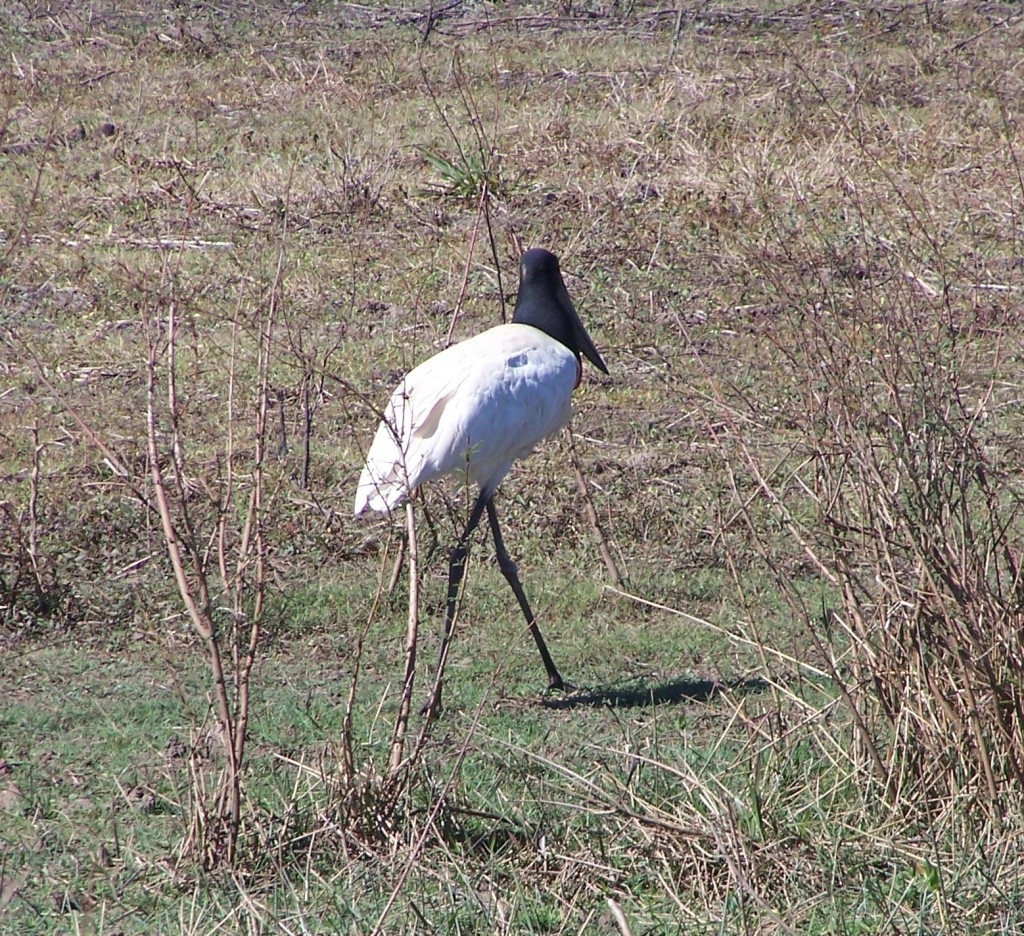
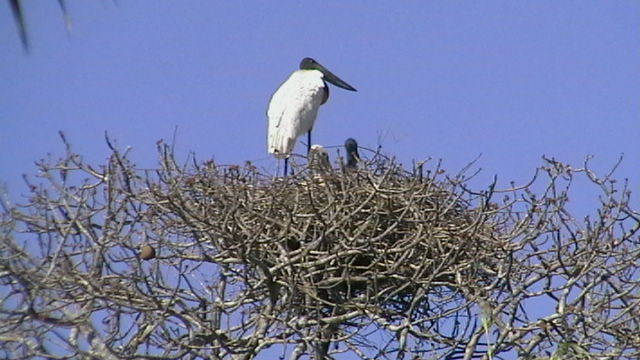
They have a huge range over most of South America and are very easy to see in the Pantanal of Brazil. I was lucky enough to see some chicks in the nest with a parent!
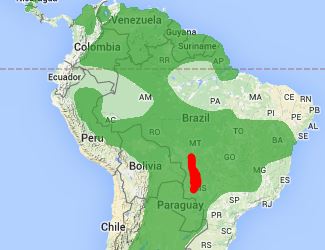
10 point landing!
Fish for lunch!
The Nanday Parakeet (Aratinga nenday) also known as the Black-hooded Parakeet or Nanday Conure (most common name used by aviculturists) is a medium-small mostly green Neotropical parrot. They are extremely popular as pets so most of you will be familiar with their appearance but what you may not know is that the eye-rings of the wild birds remains black. The eye-rings of pet birds tend to be white due to lack of sun.
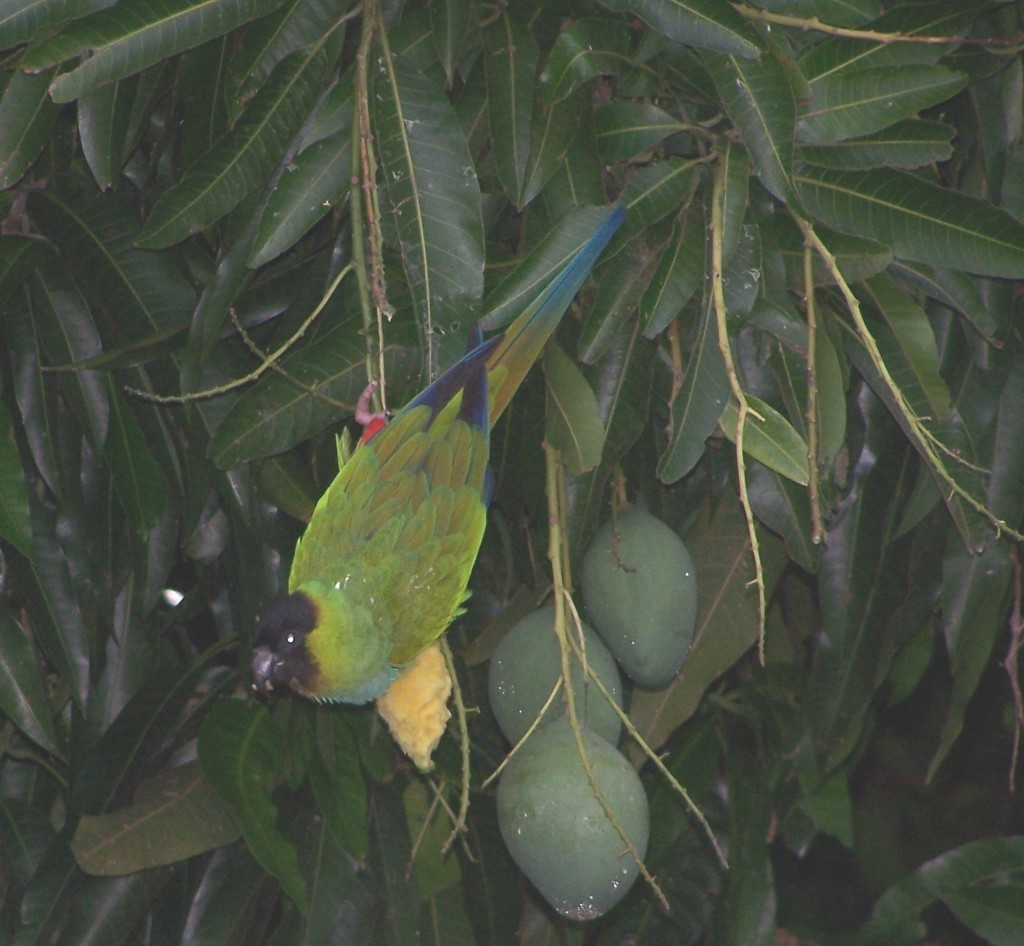
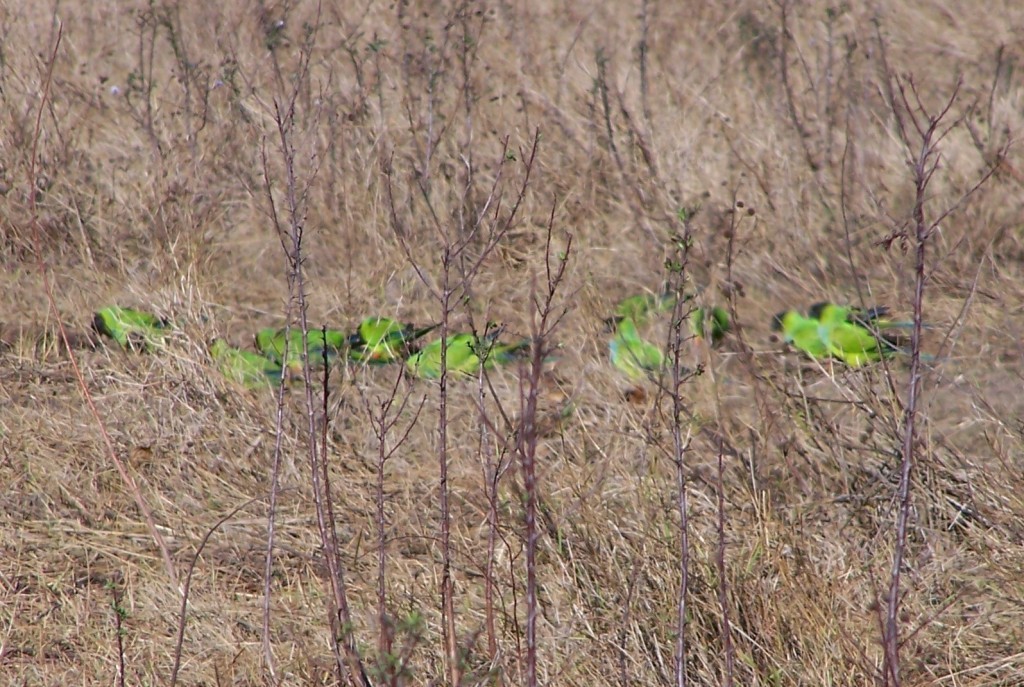
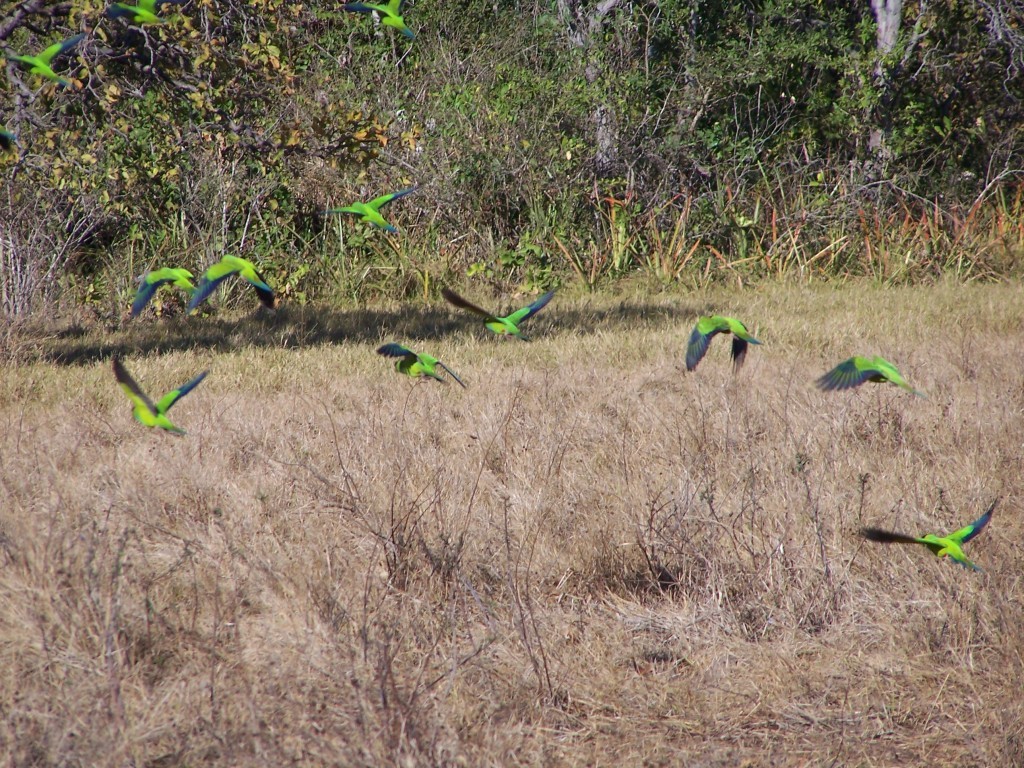
Compare the dark eye-ring of the wild bird in the top photo to this one of my pet Nanday where you can clearly see the white eye-ring.
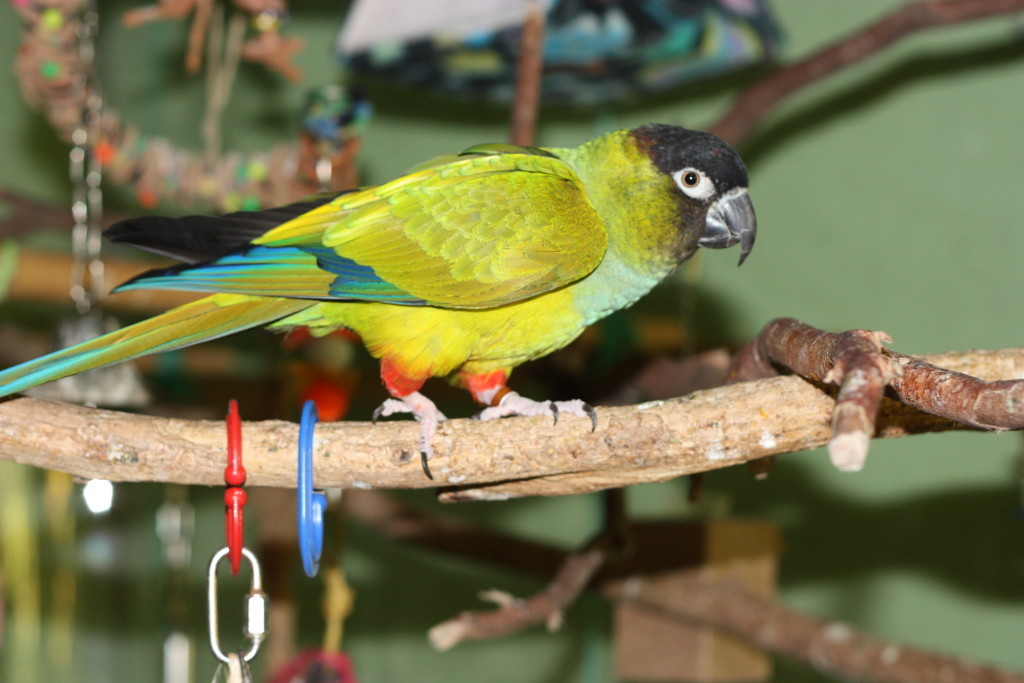
The range of Nanday Parakeets extends from southern Brazil throughout the Pantanal region into far eastern Bolivia and down to Paraguay. The Pantanal is the easiest place to see them and they are can usually be found in the trees around Caiman Ecological Refuge. I have also seen feral populations of escaped/released pet birds in Florida and heard of others in California.
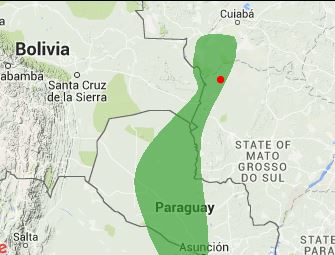
Since these birds are so popular as pets it was hard to find videos of them in the wild. Here’s a couple.
Continued from Caiman Ecologico Refuge review.
This was by far the most exciting part of the trip – a chance to see how the volunteers of Projeto Arara Azul research the Hyacinth Macaws and other birds in the area!
Cezar, Julianne and Karla picked us up right after breakfast in a 4WD truck. They were all kitted out with climbing gear so I knew they would be climbing trees to inspect nests.
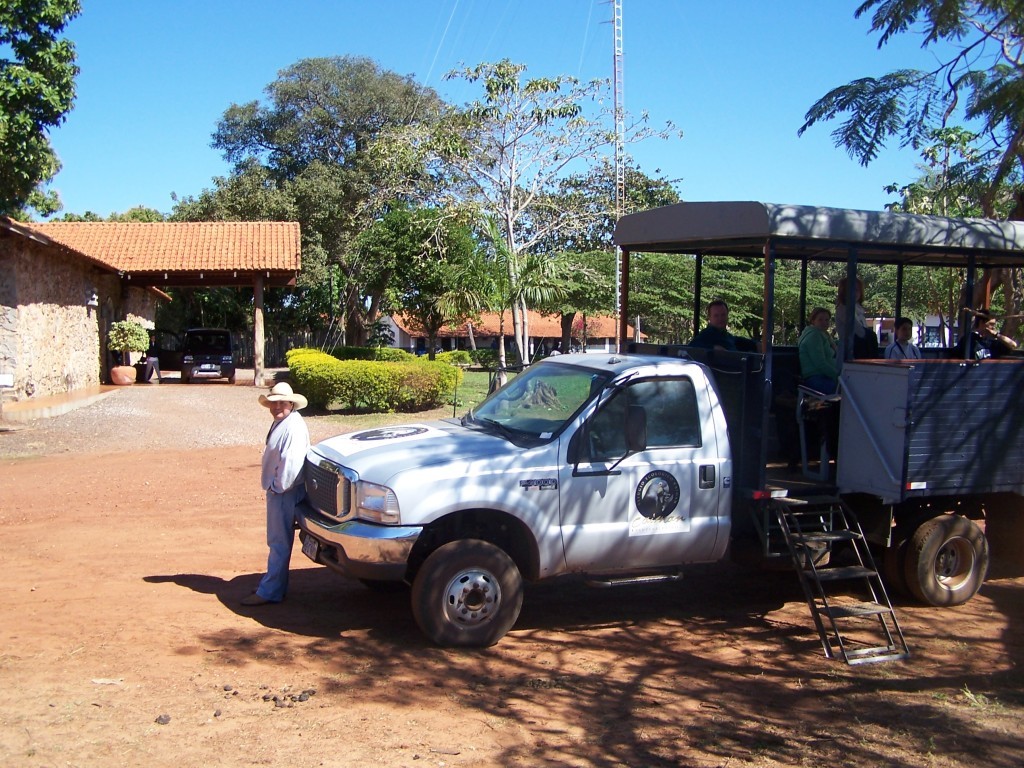
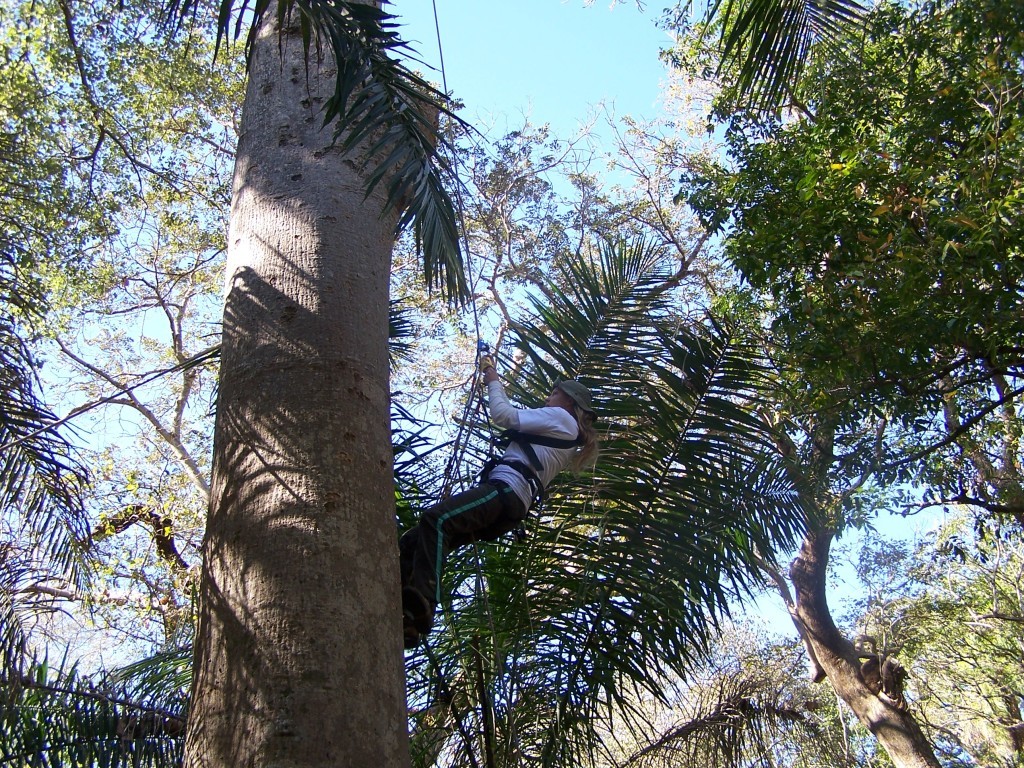
Cezar really knows his birds, every time we passed any bird (or mammal), he would tell Julianne what number it was in the field guide and she would point it out to me so I could see what it was in English. We saw lots of hawks, toucans and water birds and a jabiru stork nest. And lots of parrots!
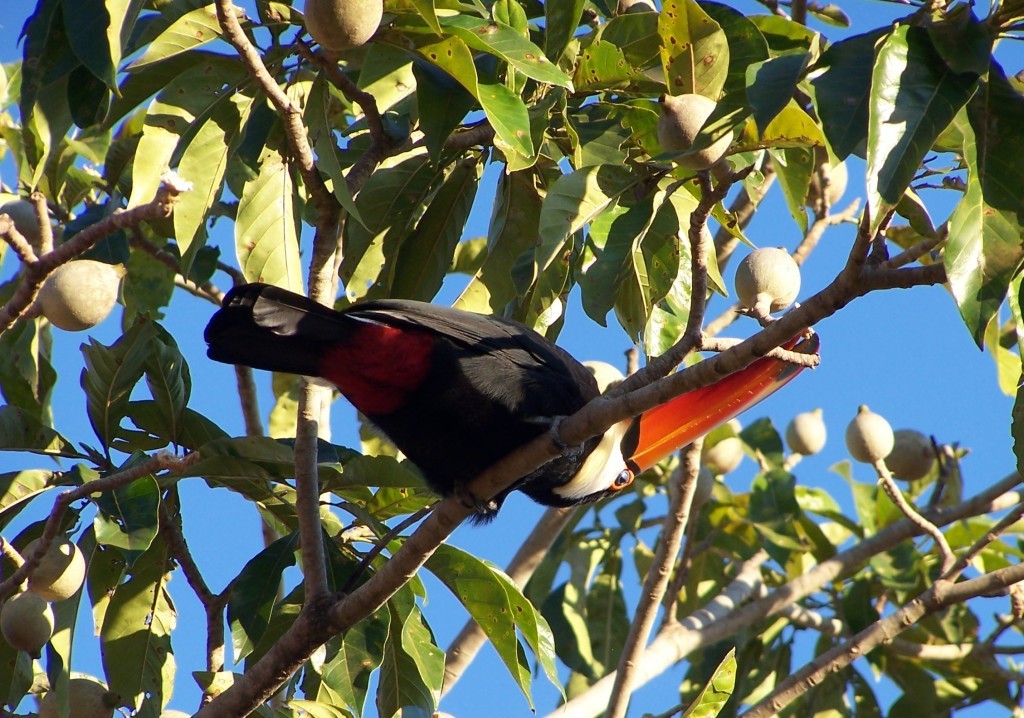
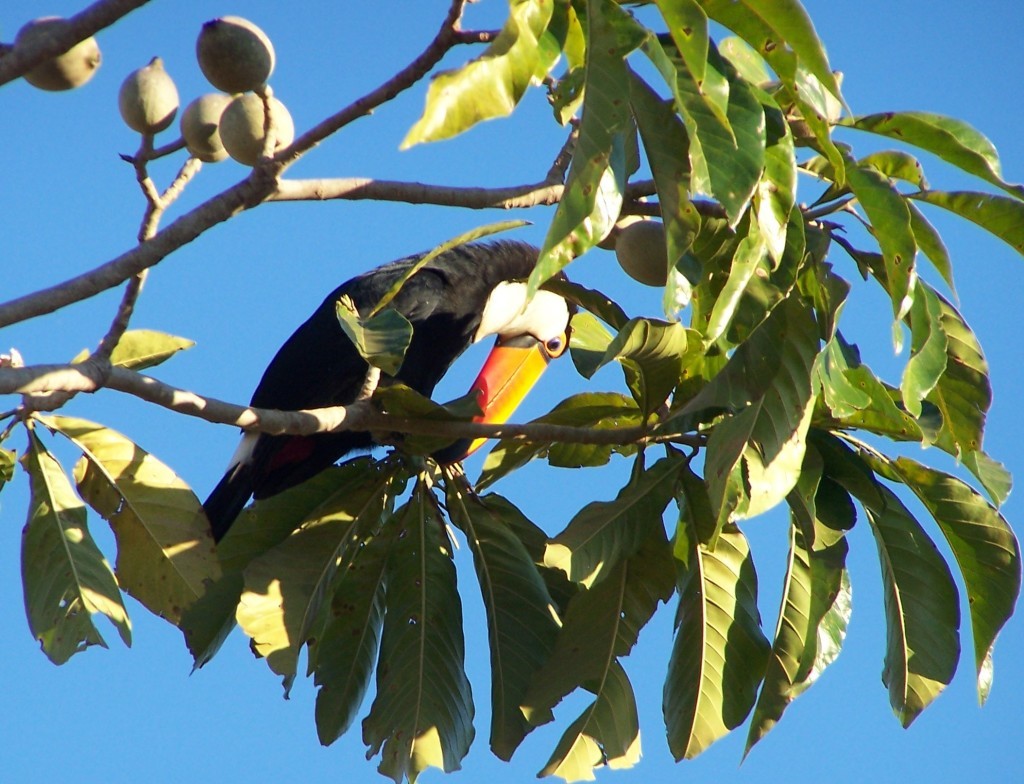
Flock of Nanday Parakeets.


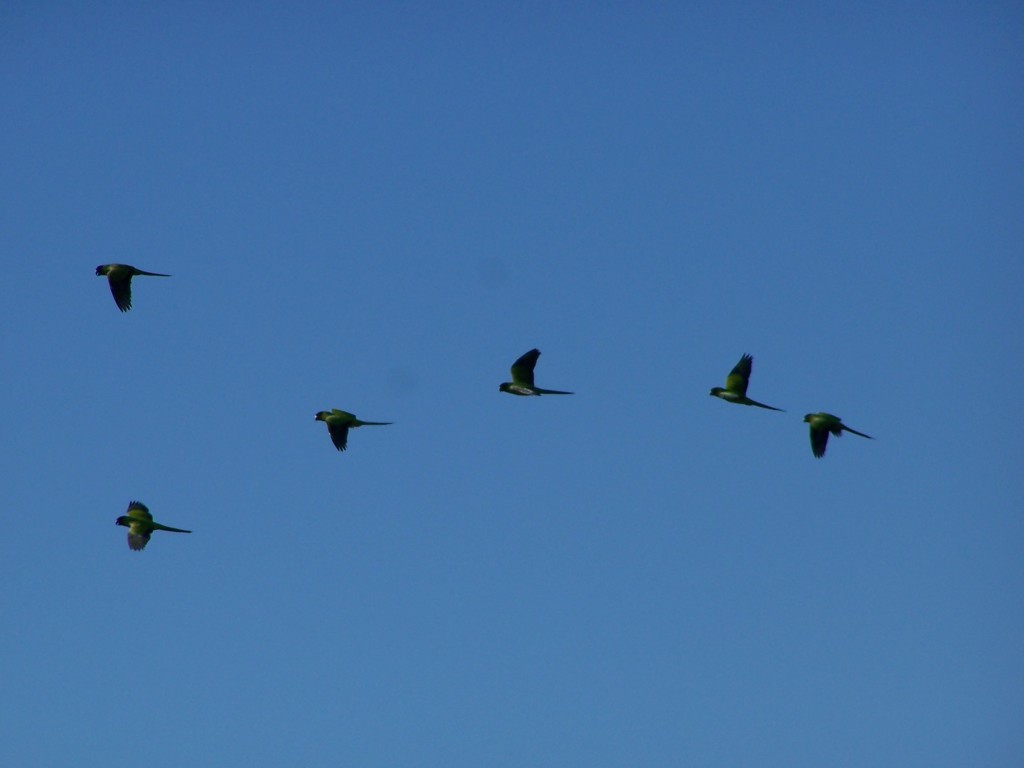
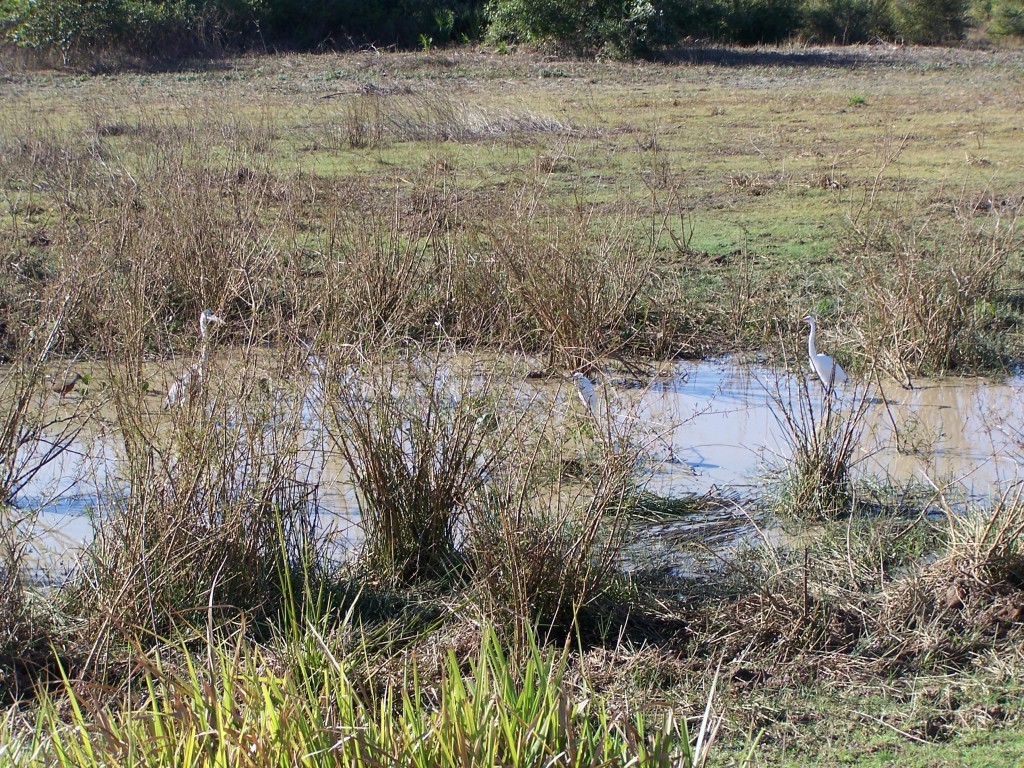
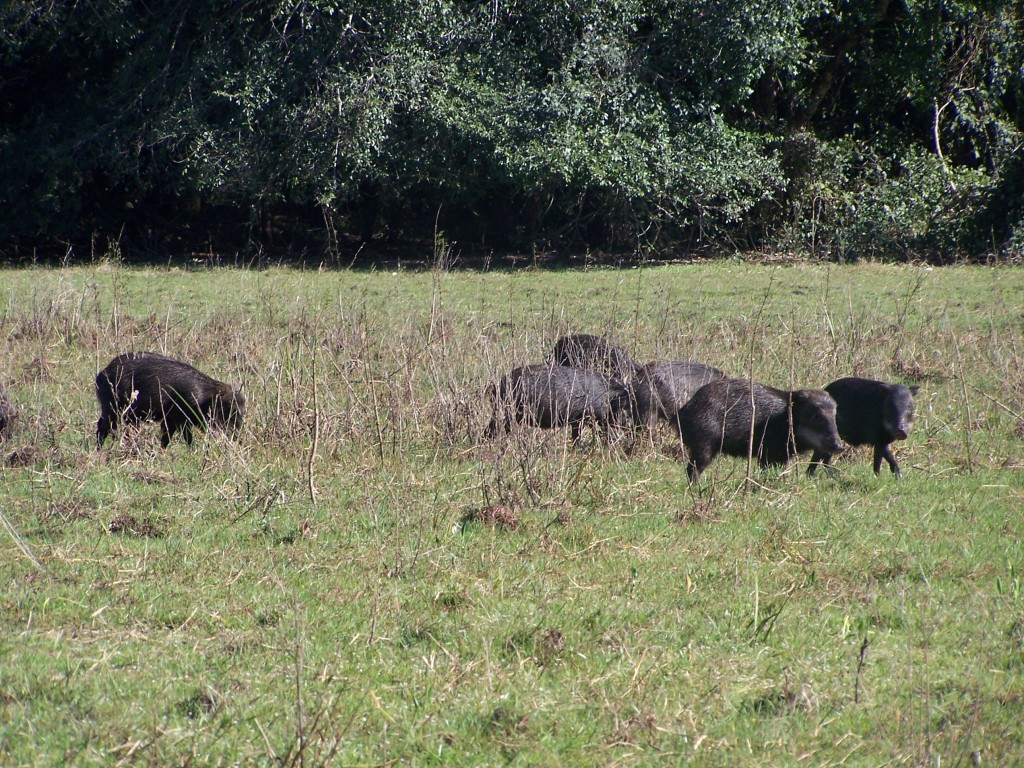
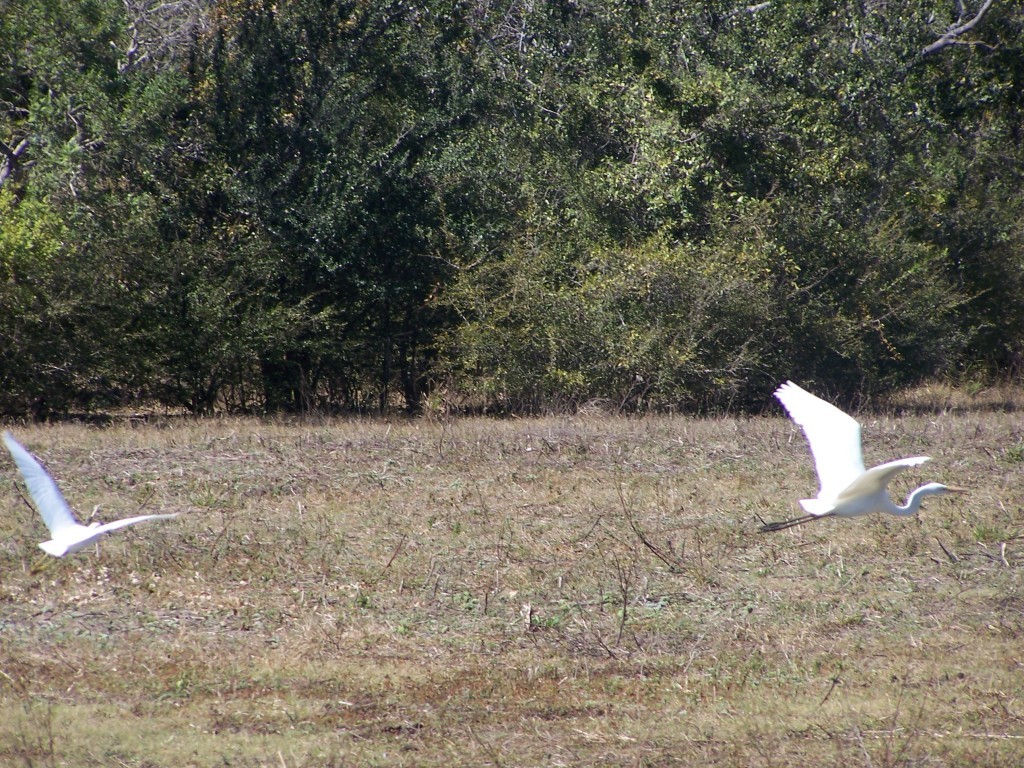

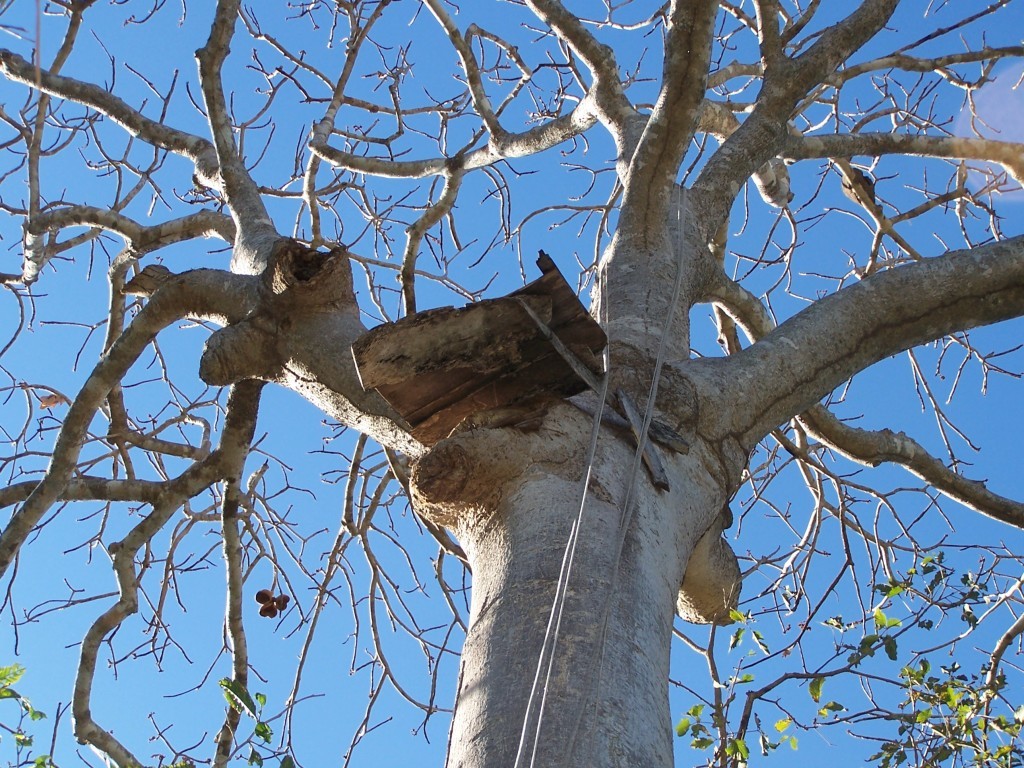
First we went to a nest occupied by two Hyacinths; Karla climbed up and saw no eggs so came back down. They have natural nest which are 95% in Manduvai trees. They have to compete for these nests with other birds and have lost many potential nests to deforestation so the Arara Azul people have constructed artificial nests. Their program is very successful as the macaw population was less than 1500 at one point and now there are over 6000 Hyacinths in the Pantanal!
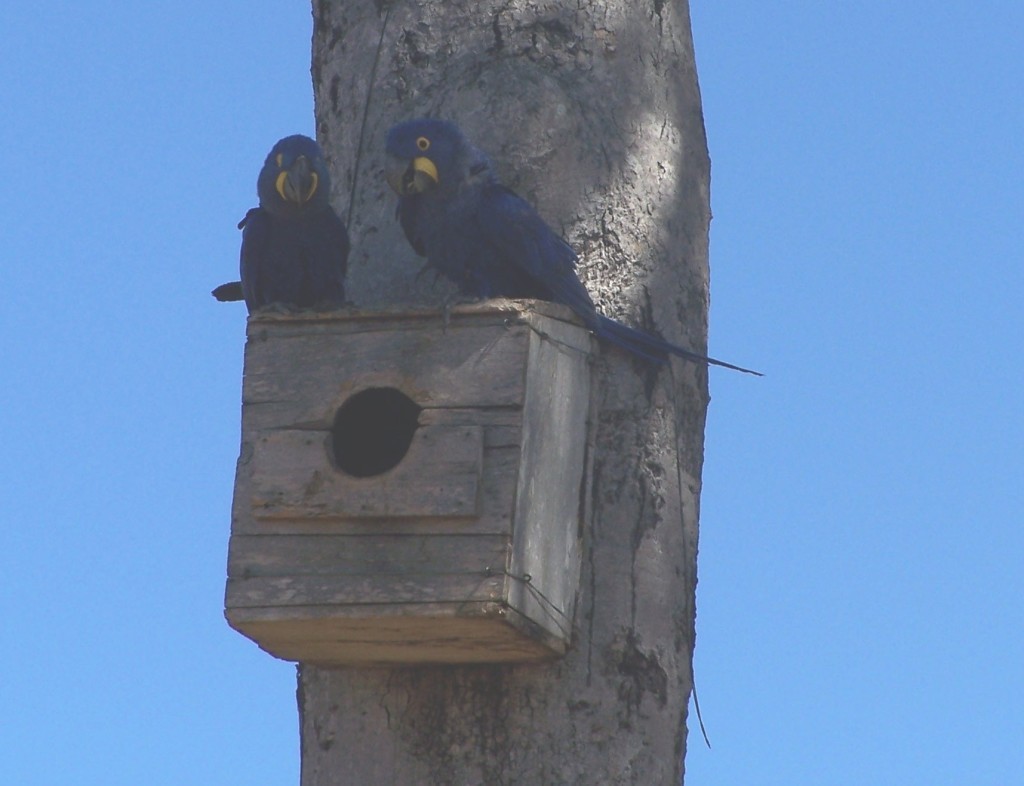
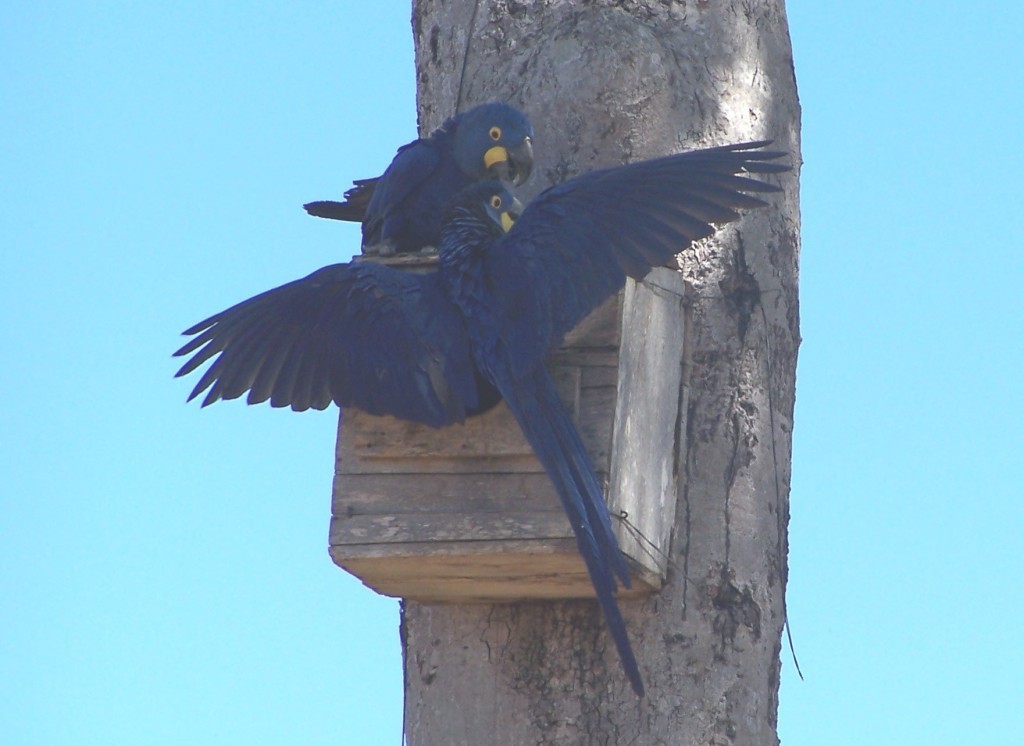
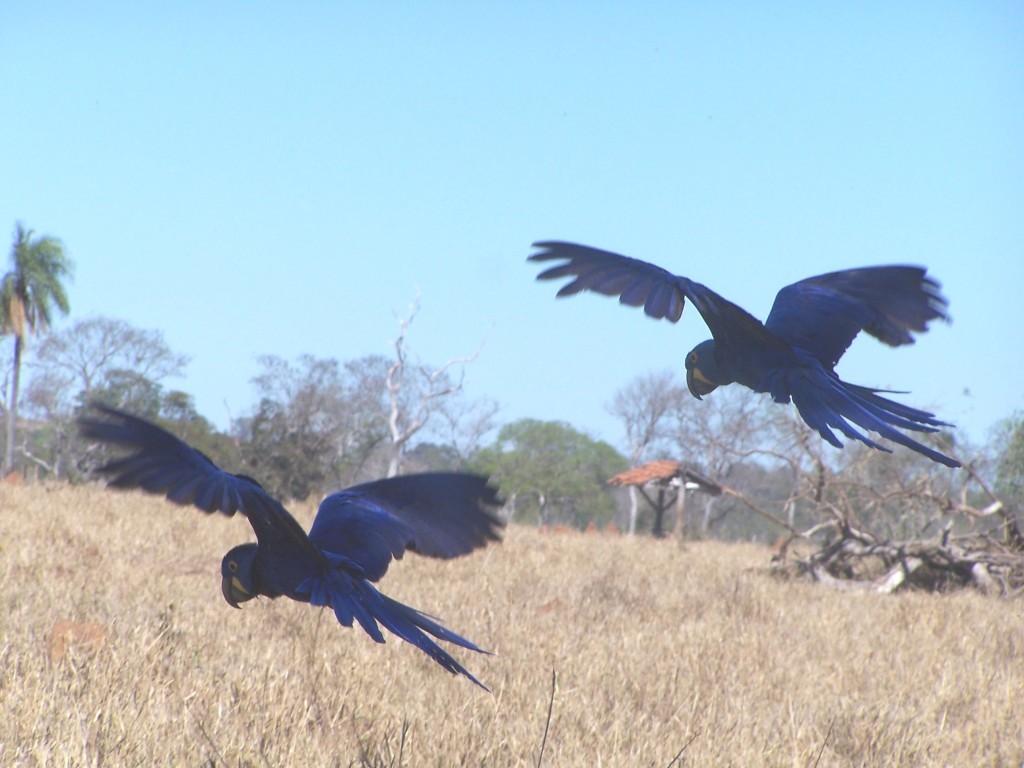
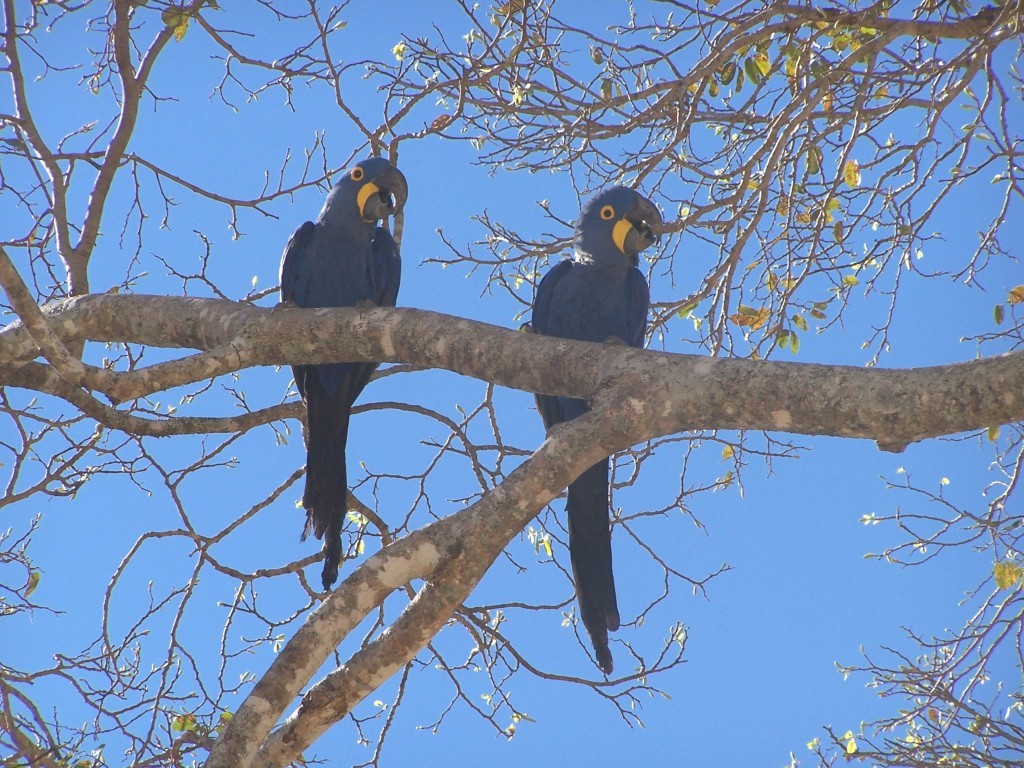
As we drove from one nest to another, the parents would fly off angrily and squawk their heads off complaining as the team took turns climbing the tree to see if there were eggs. Sometimes we got lucky!
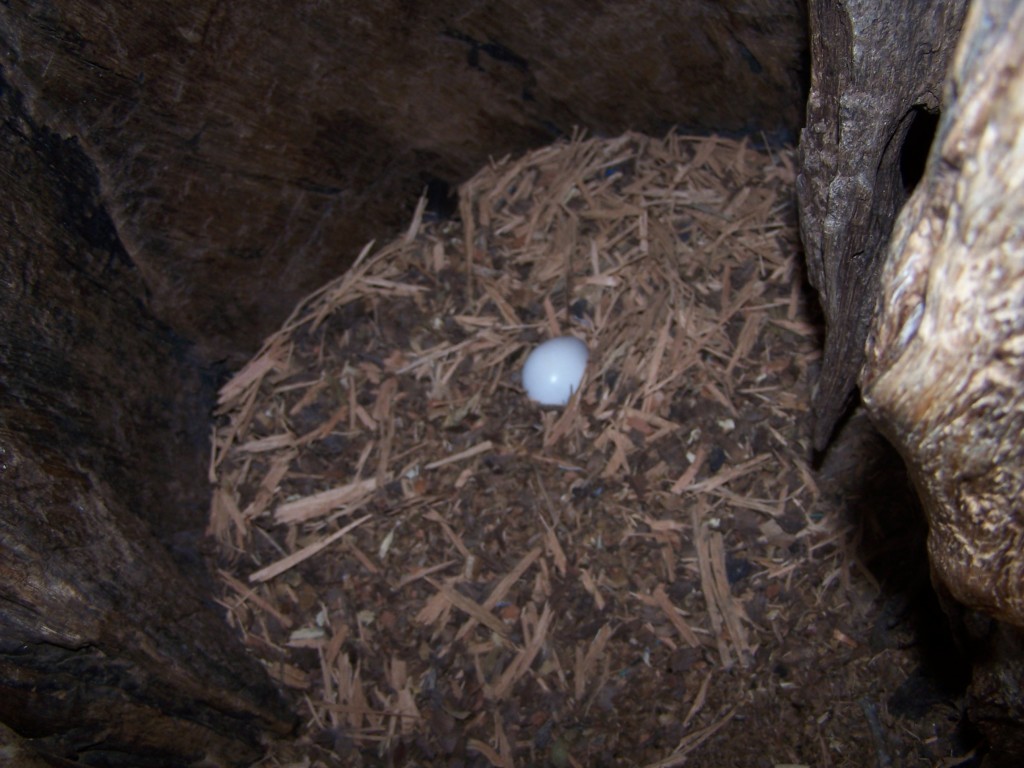
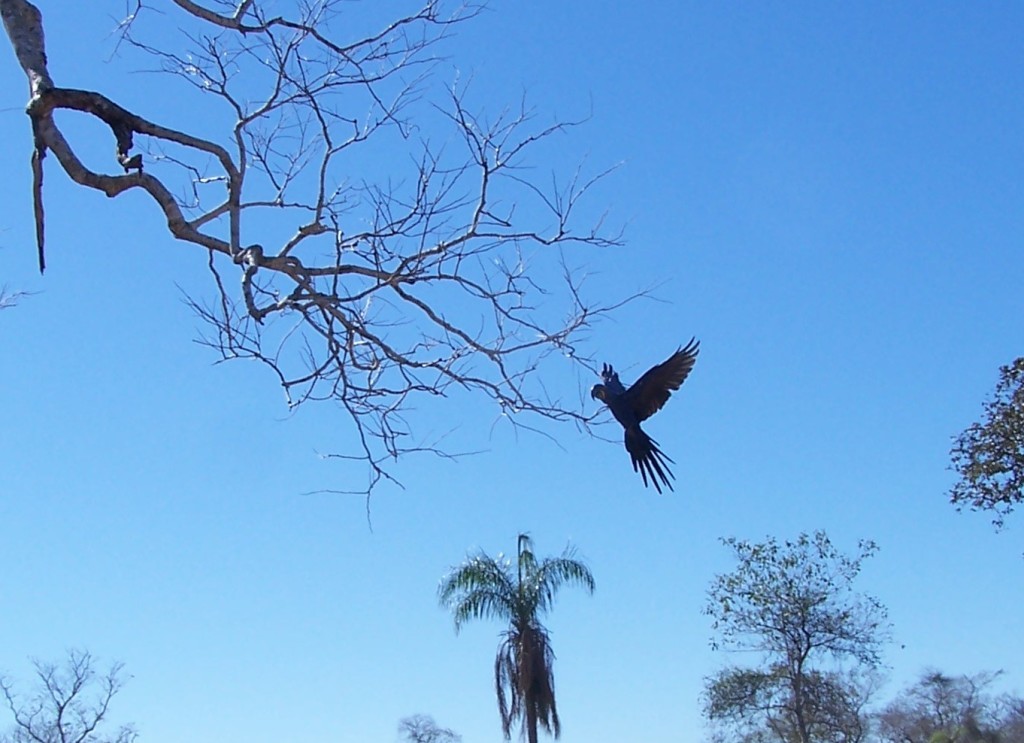
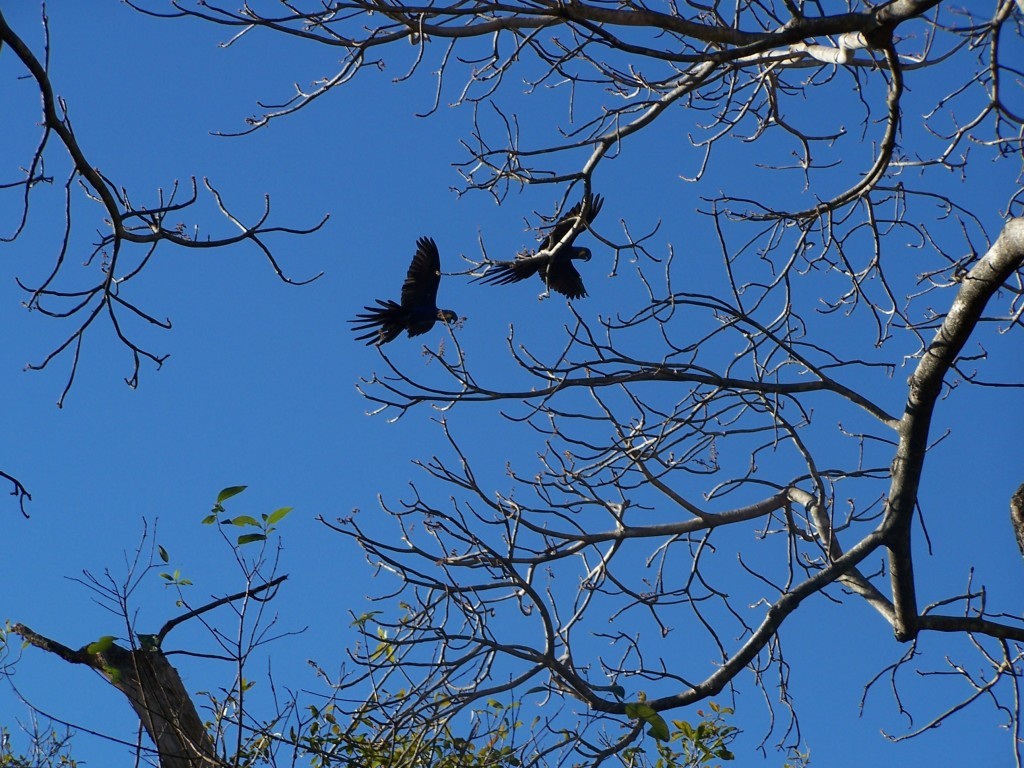
It was just the start of the breeding season now so many couples were preparing the nests with woodchips. Sadly some eggs the team had found before had been stolen by predators.
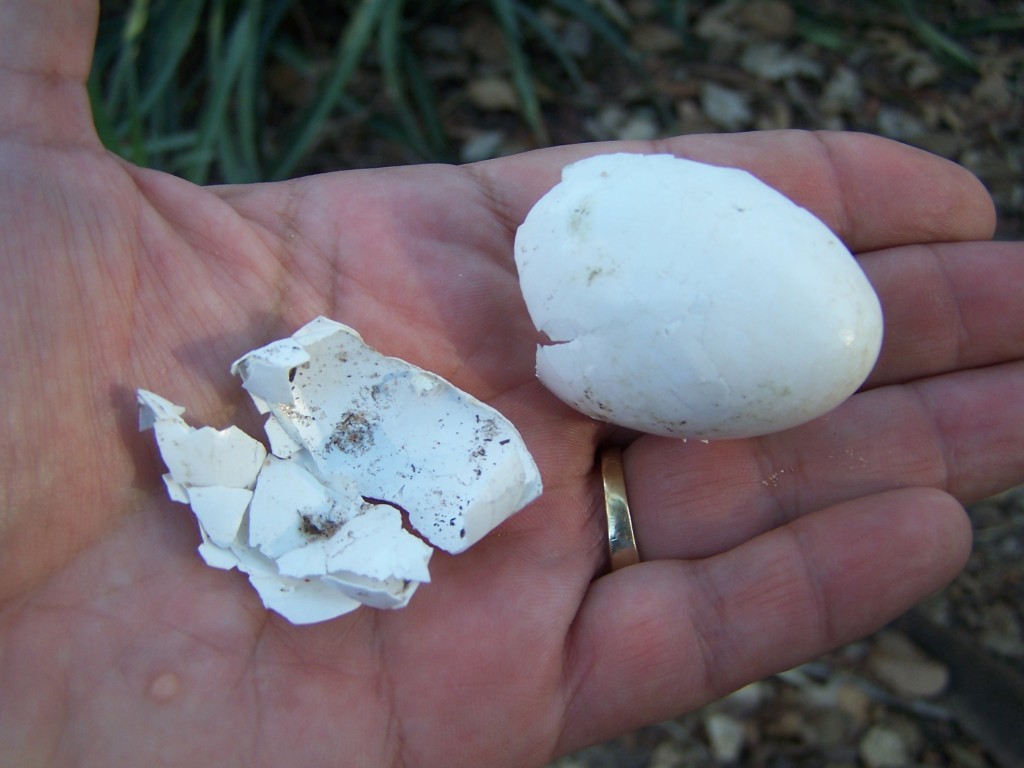
We saw several Blue-fronted Amazons and some Yellow-collared Macaws.
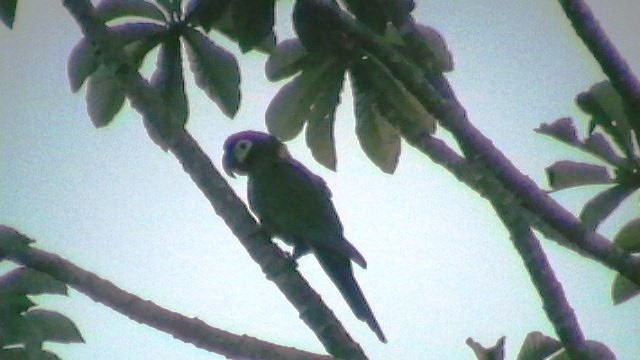
There is one pair of Greenwing Macaws who have a nest but weren’t around it so we didn’t see them. The highlight came at the end of the day when the team inspected a nest that was known to have eggs in it and found two baby Hyacinth chicks!
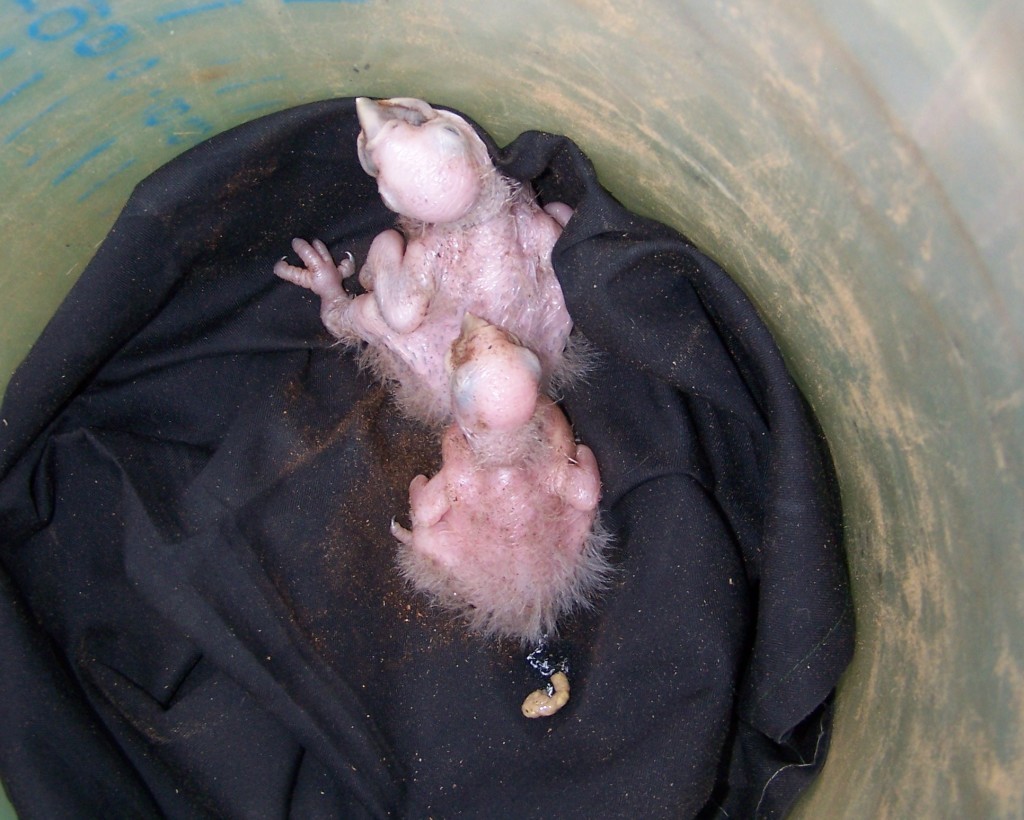
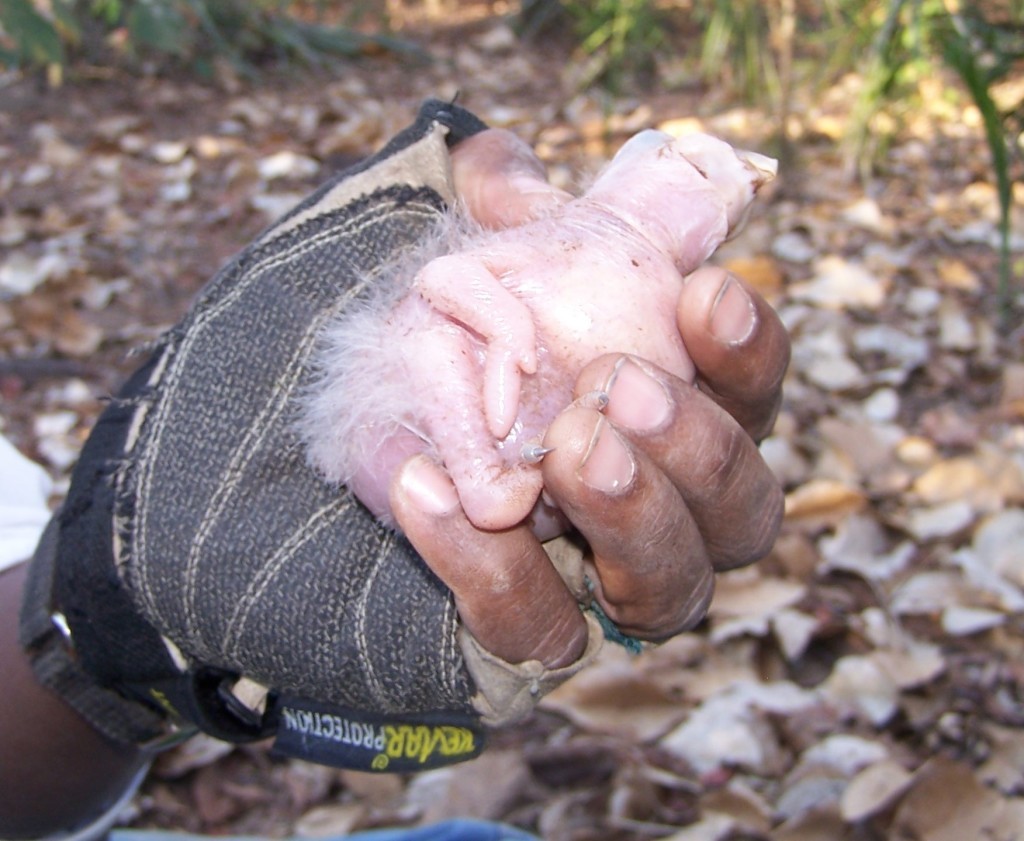
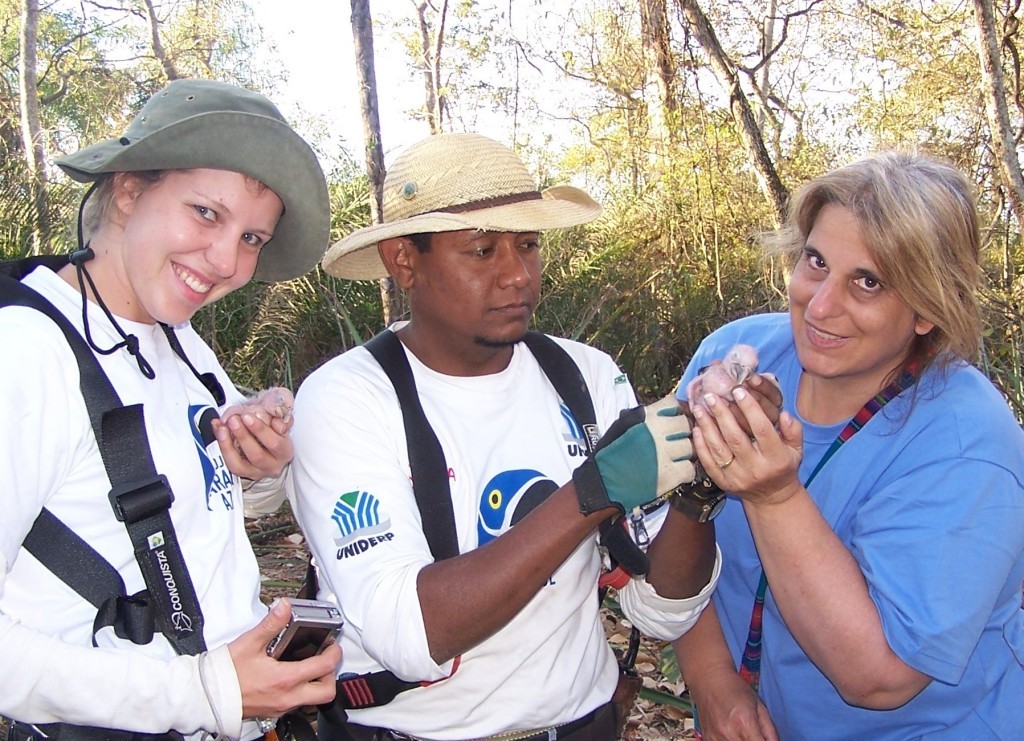
After the day’s work, we returned to the Arara Azul office and Julianne showed us the usual slide show they show normal tourists but we had missed because we weren’t on the normal tour.
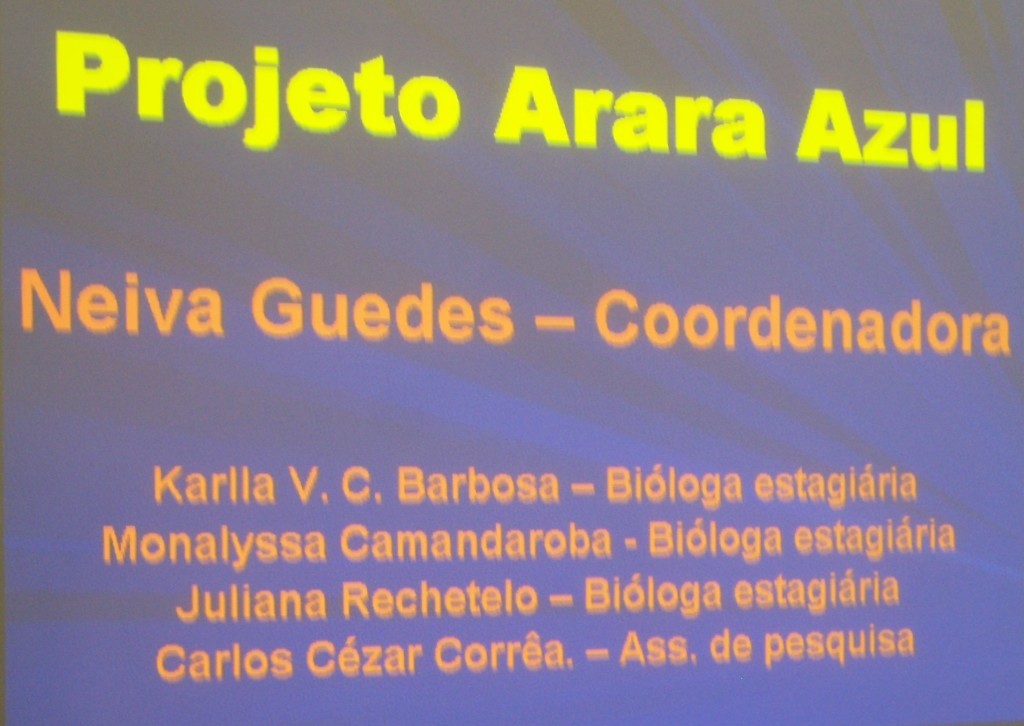
It tells about the Hyacinth Macaw, the Project and what we can do to help. Don’t buy illegally imported birds stolen from the wild. Don’t buy products made with feathers (like this one found in a Rio hotel) from Macaws and Parrots as the birds are either killed to get the feathers or so badly injured, they die anyway.
They have a gift shop which helps support the project but unfortunately they don’t take credit cards (I wish I had known that before) so I bought just a few small things as much as I could. I really love this clay rosary with birds!

They were rehabilitating an injured Female Hyacinth they named Kris. She was rescued from certain death as a caiman (alligator) and caught her by the tail when she was either drinking or bathing in the lake. Thank God a cowboy was nearby and rescued her and brought her to the project to be rehabilitated. She had lost her tail and couldn’t fly or eat.
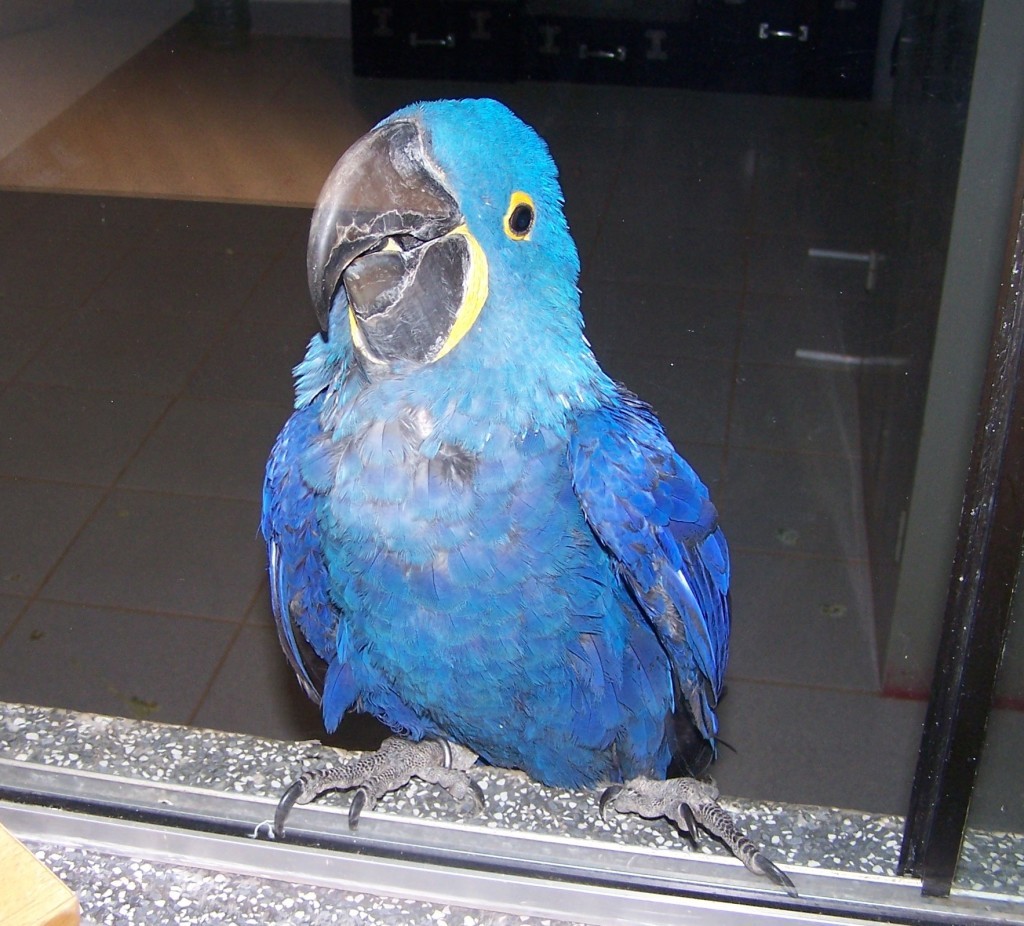
Now she is almost ready to be released back to the wild but she still needs to be able to crack the Acuri nuts by herself. I wanted to give her a big hug but they don’t encourage showing affection to Macaws that need to be released to the wild and they don’t want them friendly to humans. I did get to scratch her head a bit while one of the volunteers held her.
We rejoined the other tourists for dinner. They had done the usual lodge tours but they didn’t see half of what we did, I was so happy we went! After dinner there was a slide show about the Caiman resort which was very interesting.
Last year, I scored some easy Velocity points for doing something I needed to do anyways – get my car serviced at Midas. The promo is back until the end of January although this time you only get 2500 Velocity points. But if your car is due, why not get some easy points as well?
The Scaly-headed Parrot (Pionus maximiliani) is a species of bird in the Psittacidae family, the true parrots. It is also called scaly-headed pionus, Maximilian pionus, Maximilian parrot, Maximilian’s pionus, or Maximilian’s parrot.
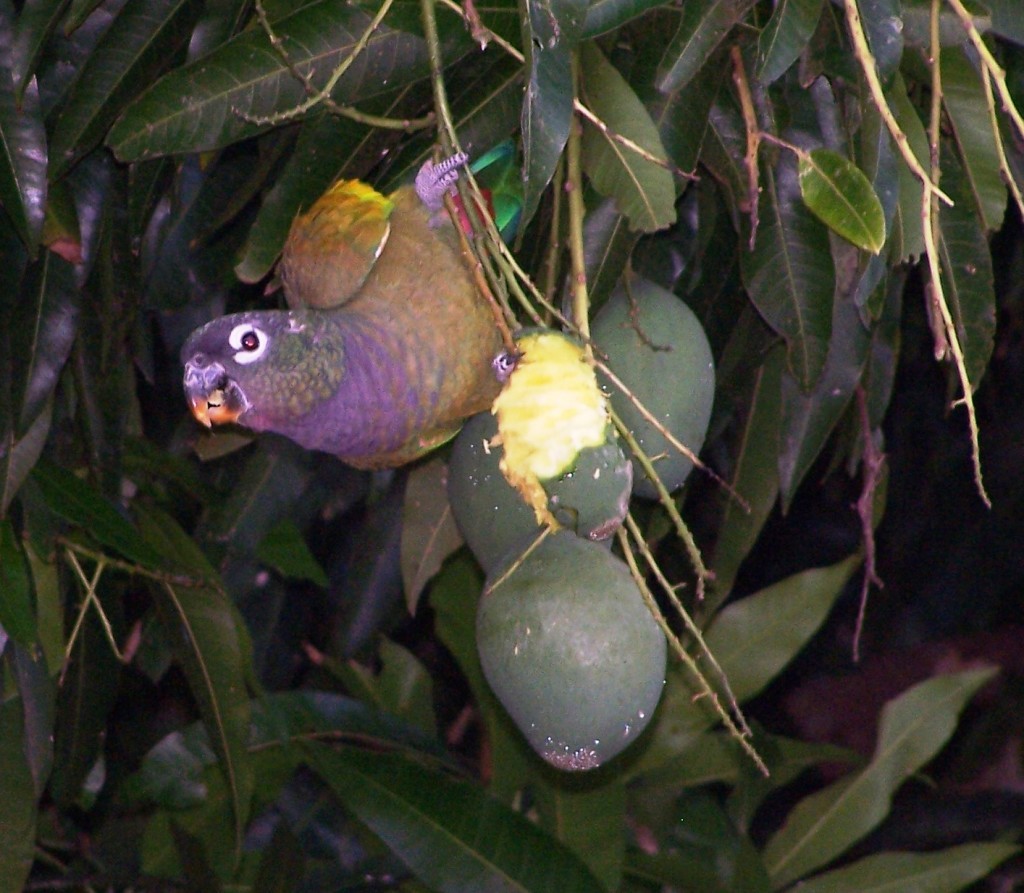
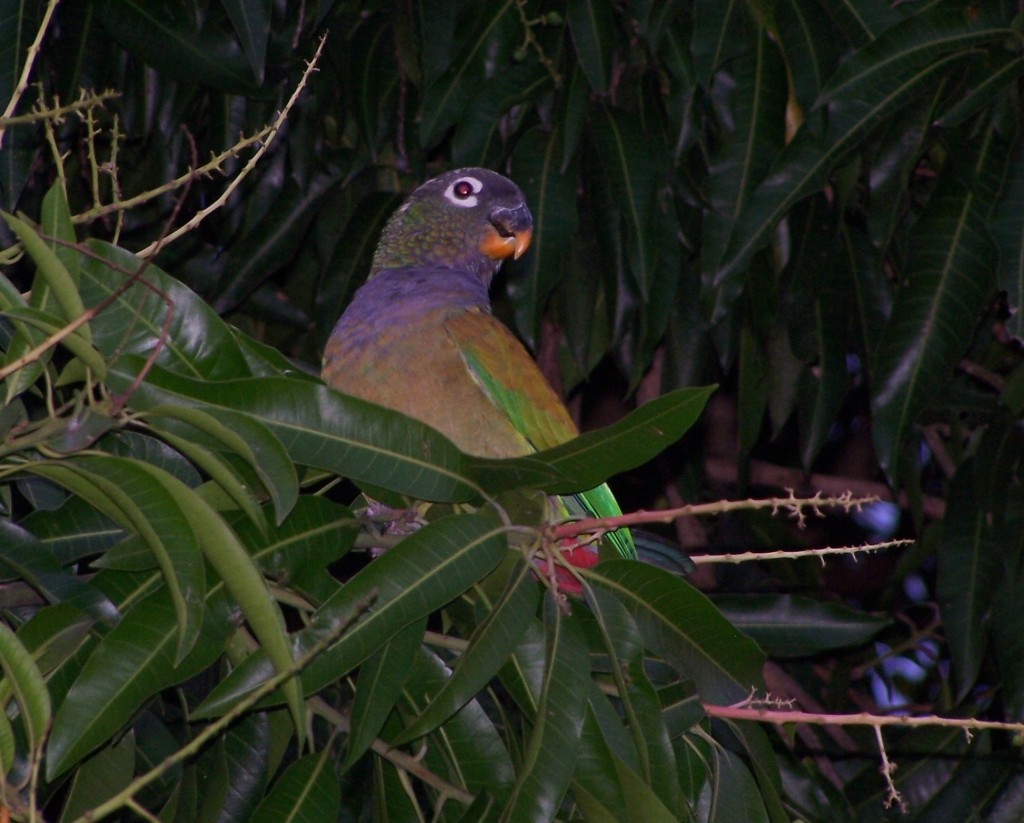
They have a large range in eastern Brazil, central and eastern Bolivia, Paraguay, and northern Argentina. Many people see them in the Pantanal, especially in the Caiman Ecological Refuge area.
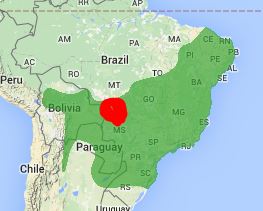
For some reason these birds always seem to be eating!
*Originally published on Feathered and Free. These historical reviews are gradually being merged to MTTW.
The Pantanal region of Brazil is one of the “holy grails” of any parrot lover or bird watcher. This vast wetland wilderness is home to the rare Hyacinth Macaw as well as some commonly found species such as Nanday Conures, Amazons, Quakers and Maximilian Pionus. I began researching two years in advance on the internet to insure we would have the best possible experience. I like to give preference to ecotourism projects that benefit endangered species and provide employment opportunities to locals who might otherwise have engaged in the heinous practice of poaching. After careful consideration, I chose the Refugio Ecologico Caiman because it is home to the Projeto Arara Azul founded by Neiva Guedes. This project has been instrumental in bringing back the Hyacinth Macaw from near extinction and studying their breeding habits. The project has succeeded in bringing the population of Hyacinth Macaws from 1500 to 6000! Since 2007, small groups can arrange to accompany the volunteers of the project on their daily activities and studies.

I arranged our package through Open Door Tur which is a reliable tour operator based in Campo Grande, Brazil. Campo Grande is the gateway to the Pantanal and is accessed by plane from Sao Paulo or by bus from many Brazilian cities. We took the comfortable overnight bus from Foz do Iguacu and spent one day in Campo Grande to rest up before our big adventure.
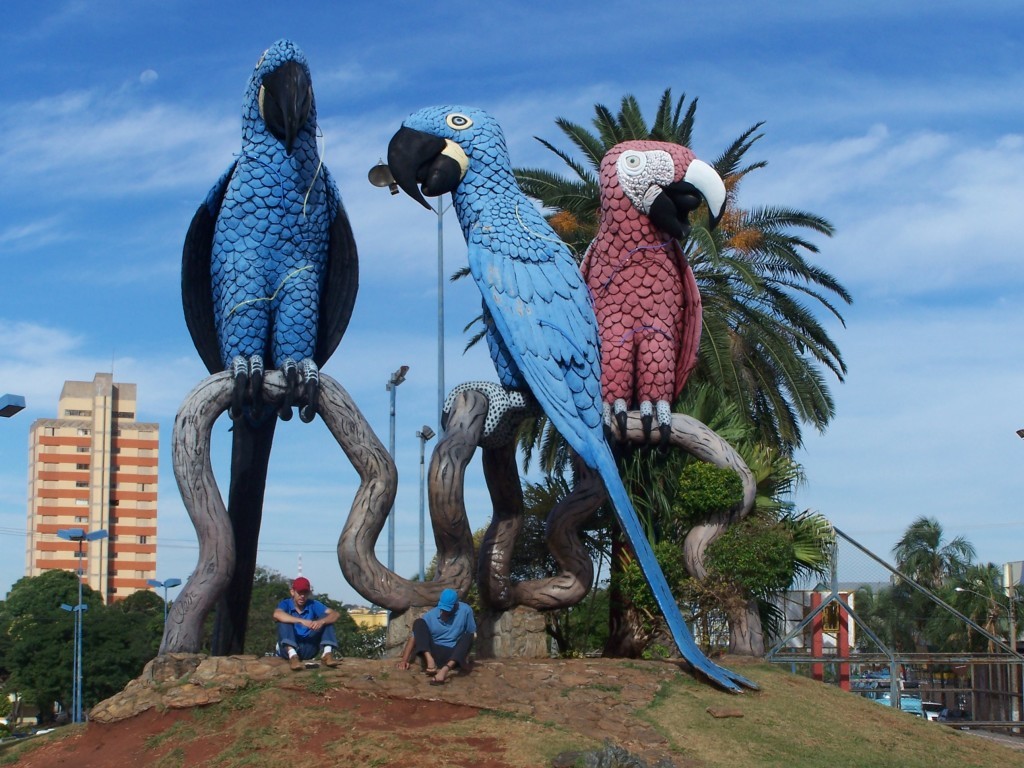
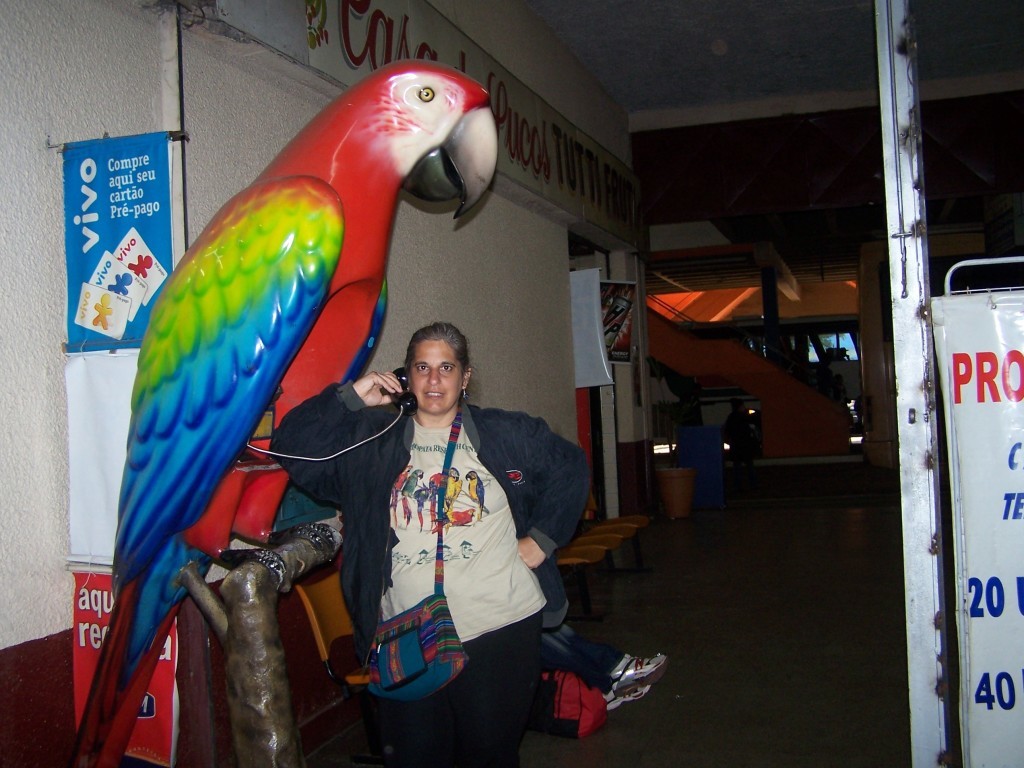
Sylvia from Open Door Tur picked us up at our hotel and took us on the 3.5 hour drive to Refugio Ecologico Caiman.
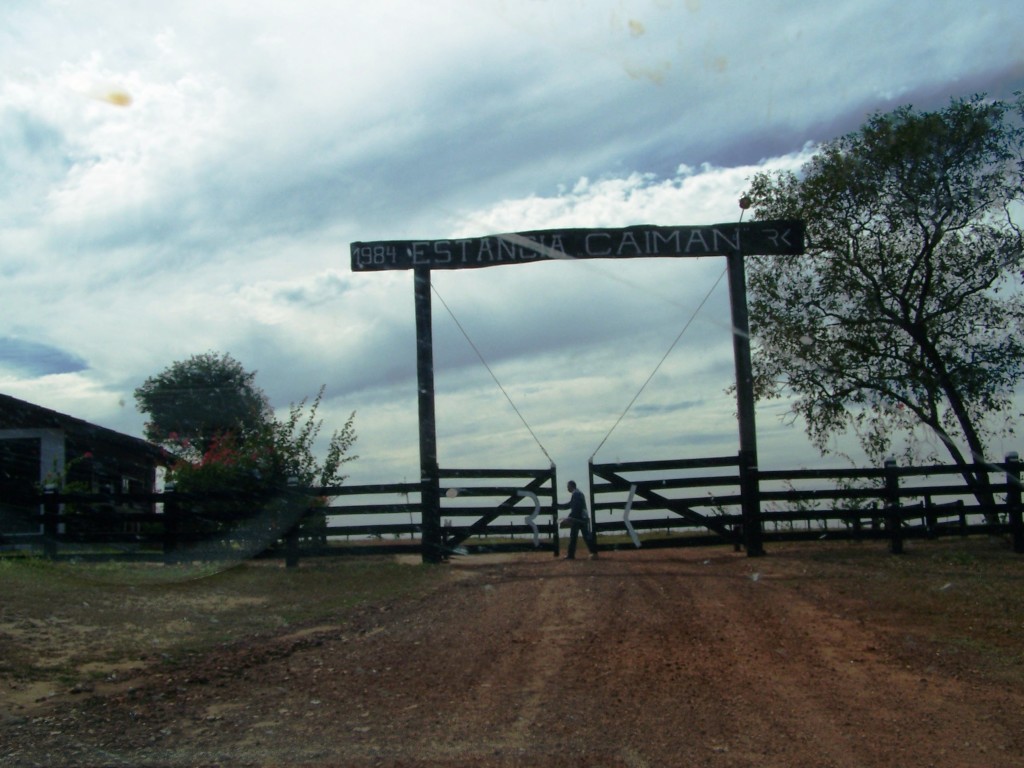
We were met on arrival by the staff and immediately shown to a room near the swimming pool at Sede Lodge.
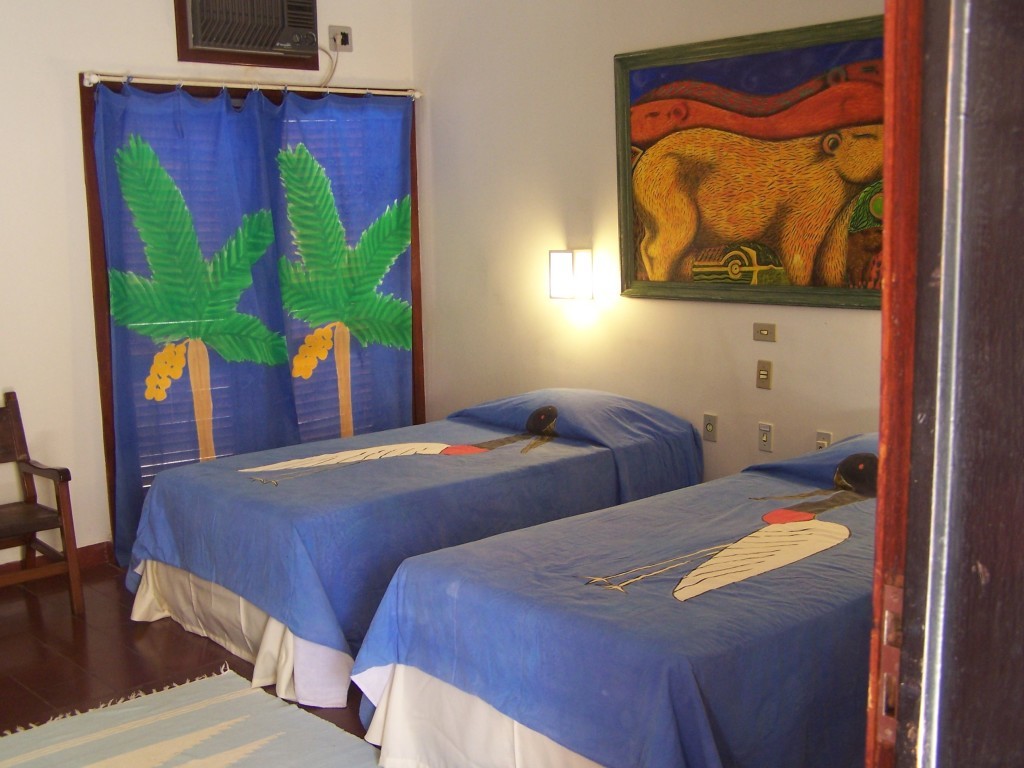
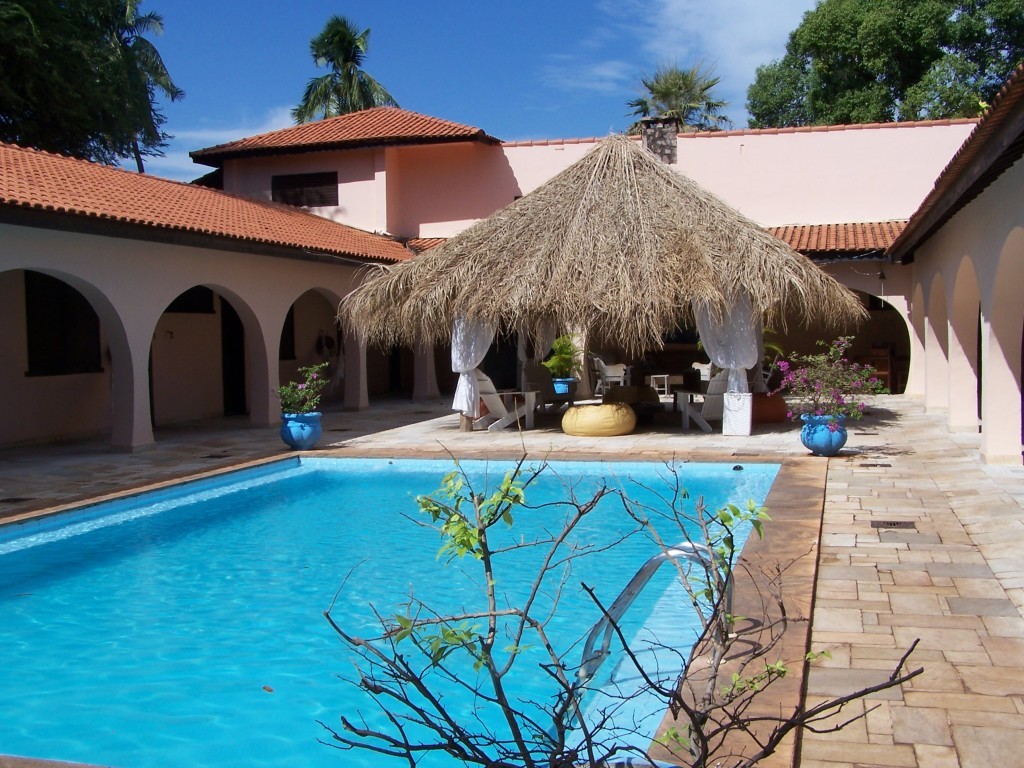
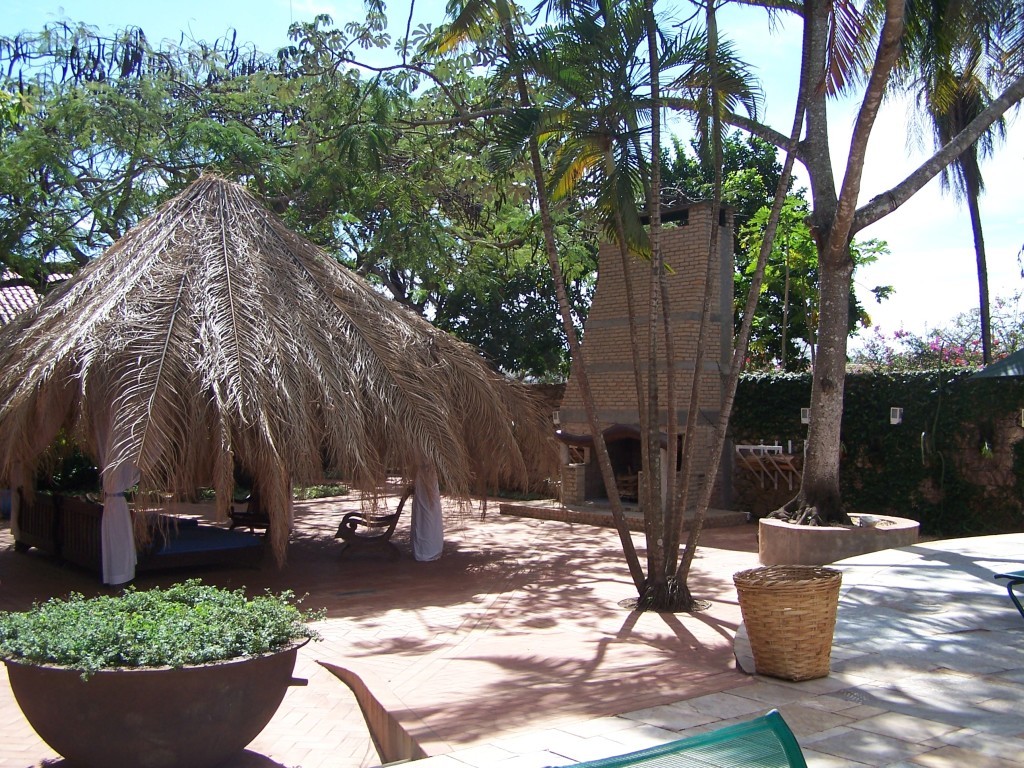

Everyone was very friendly and they explained about the board with the tours and activities. They divide everyone into two groups-yellow (English) and blue (Portuguese). A buffet lunch was served at noon and then we discovered that so far, we were the only tourists to arrive in our yellow group.
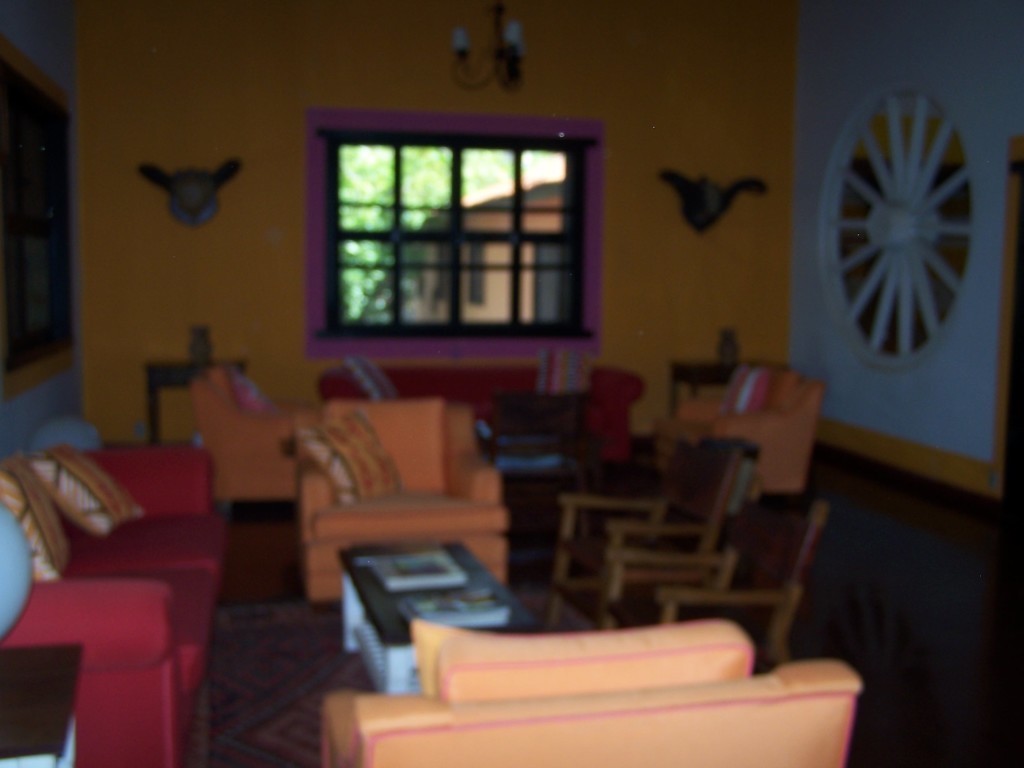
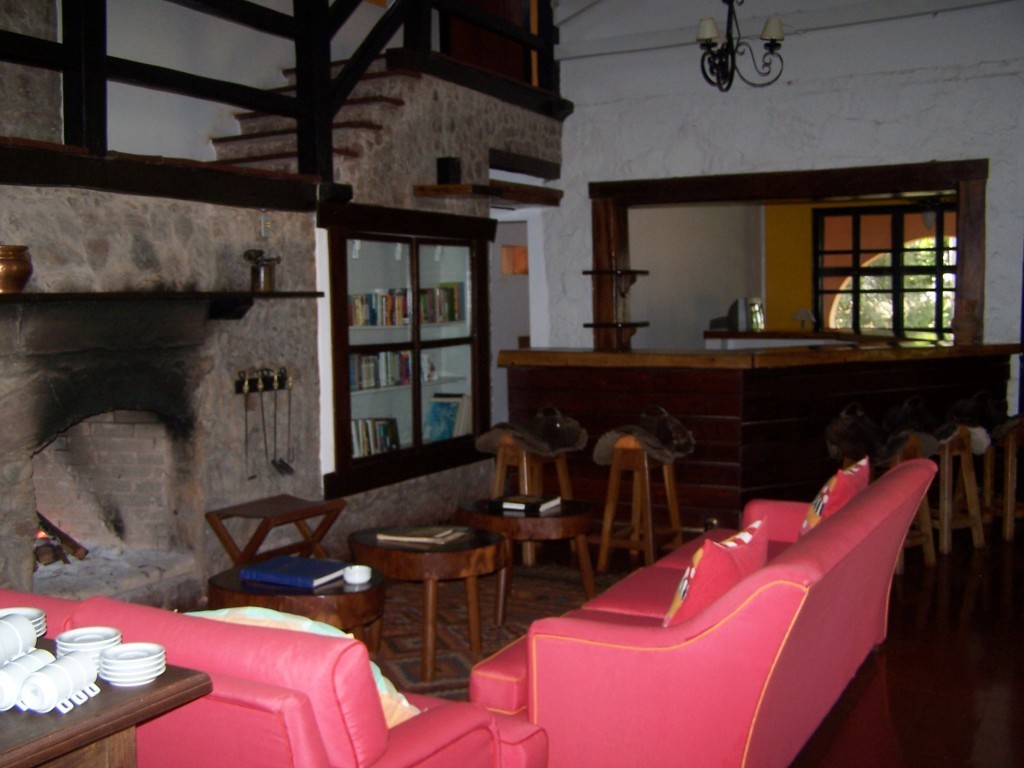
The flights were still chaotic and everyone else was delayed. While resting after lunch, I heard the distinctive Macaw squawk and ran out into the garden to see two Hyacinth Macaws munching on nuts in a palm tree right there in the hotel garden! Not even on a tour and already seeing Hyacinths!!!
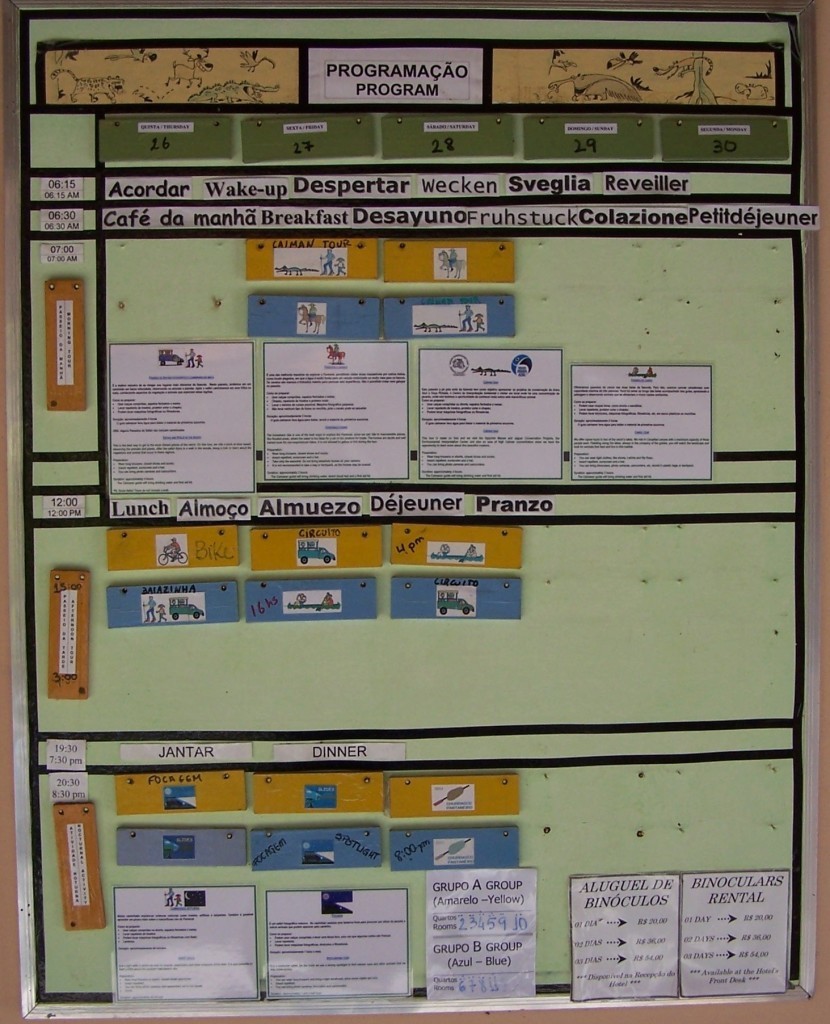
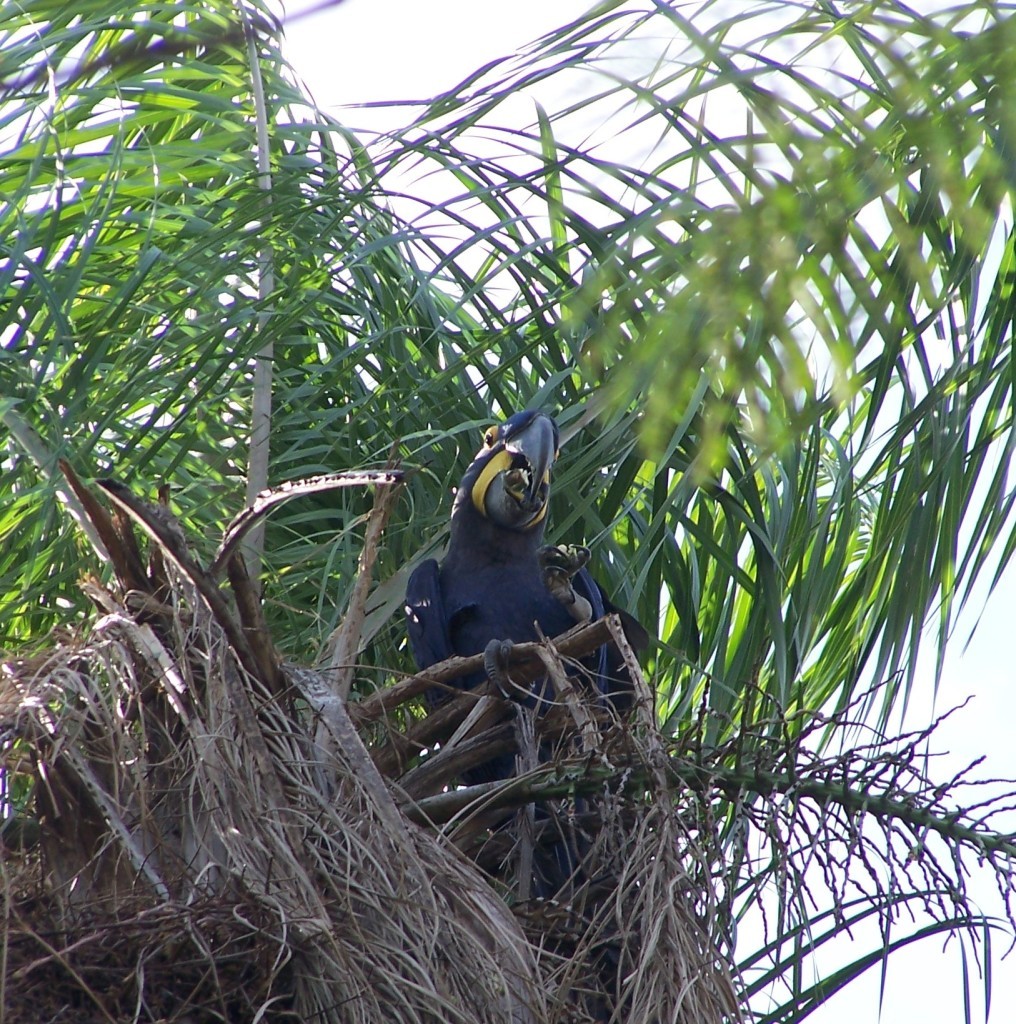
The afternoon activity was the bike ride and it was only us and the guide, two other guides went along just for the fun of it, nothing else to do. Rheas which look like ostritches were on the grounds.
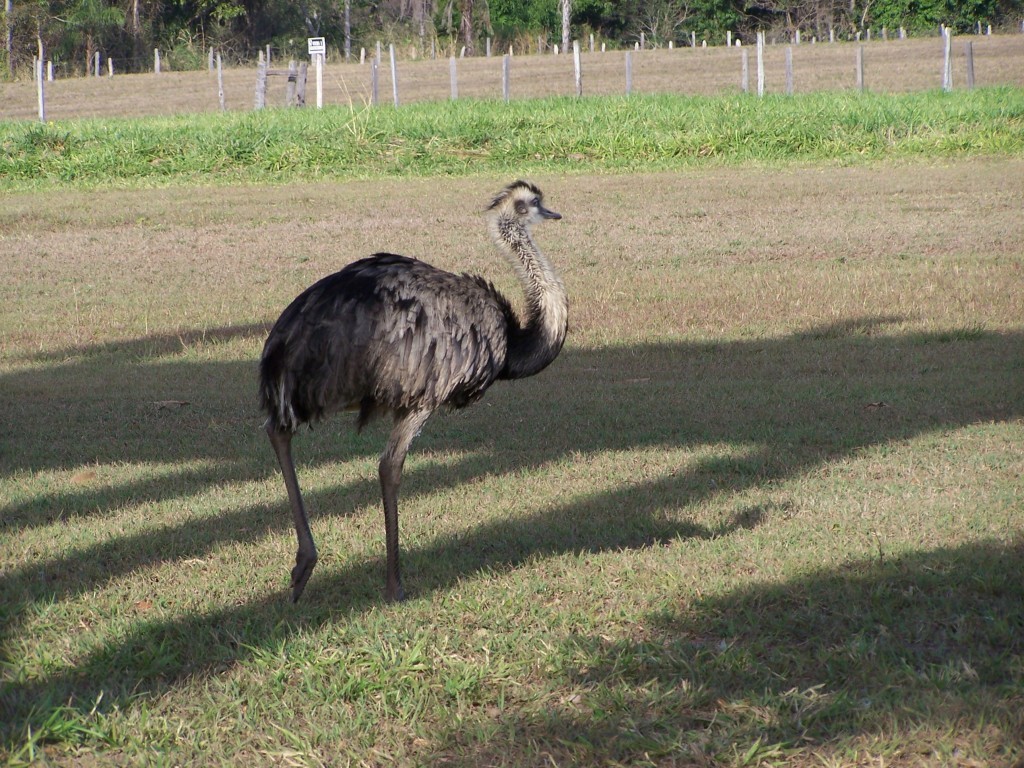
We had barely gotten out the gate when we saw about 7 or 8 Hyacinths flying around so I leapt off the bike to grab pics.
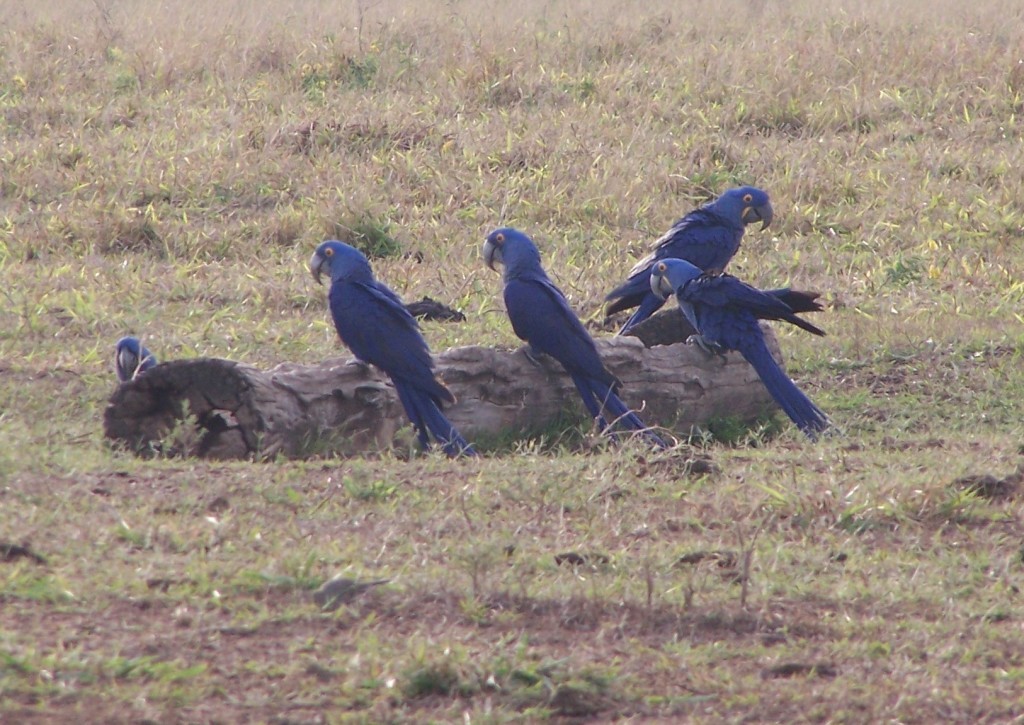
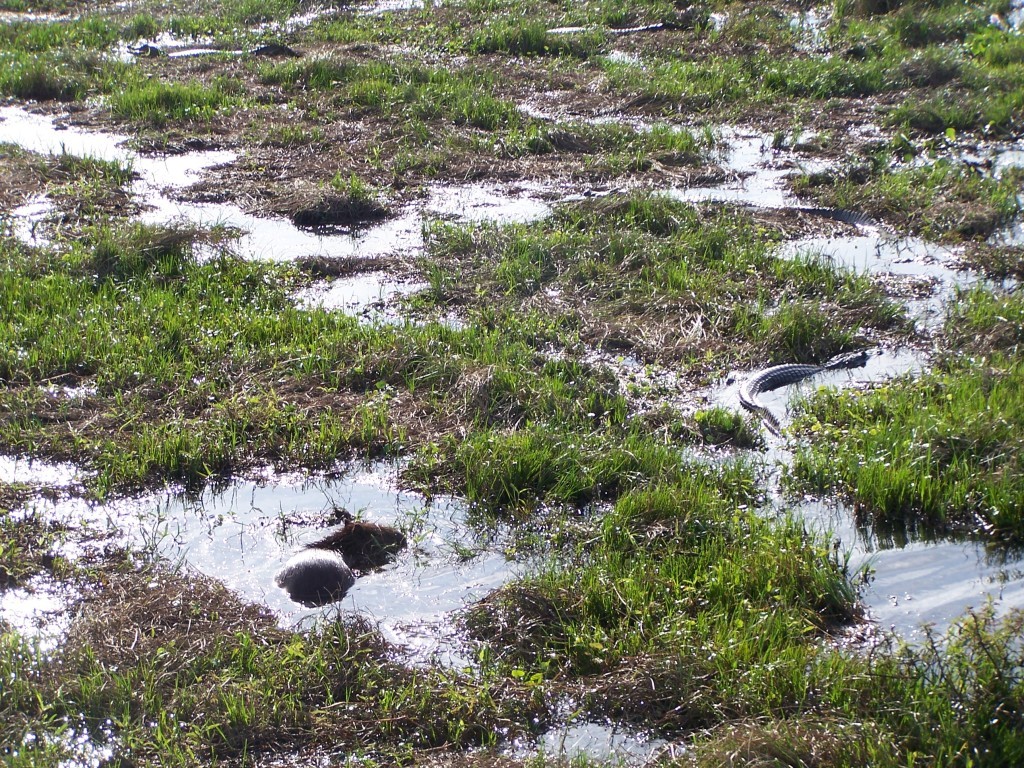
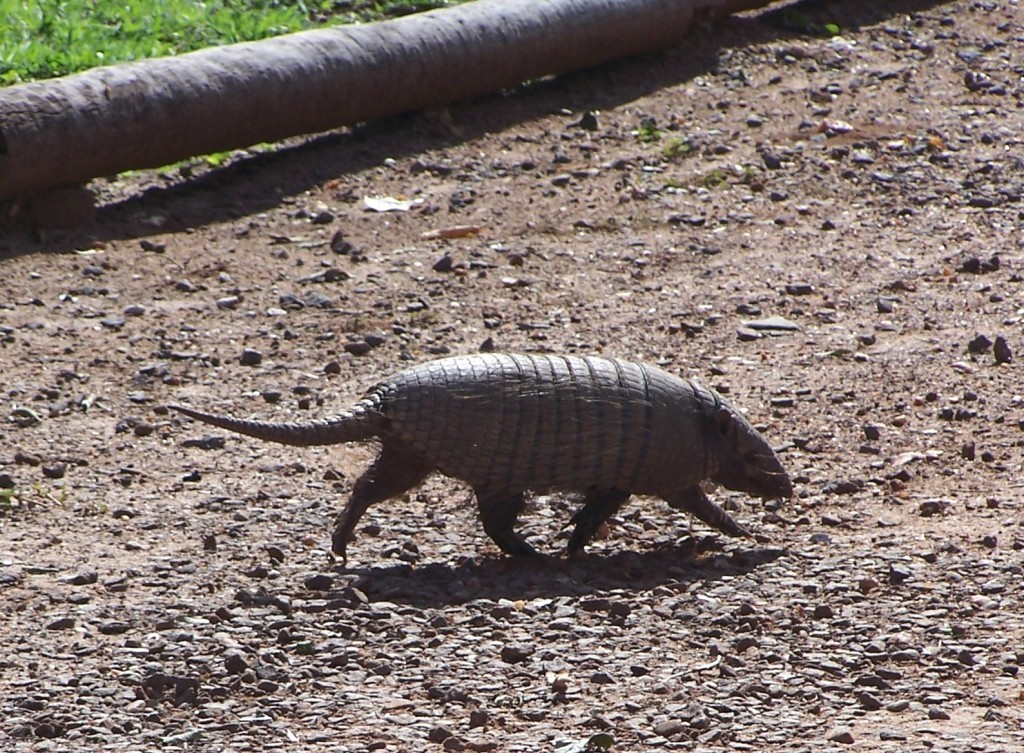
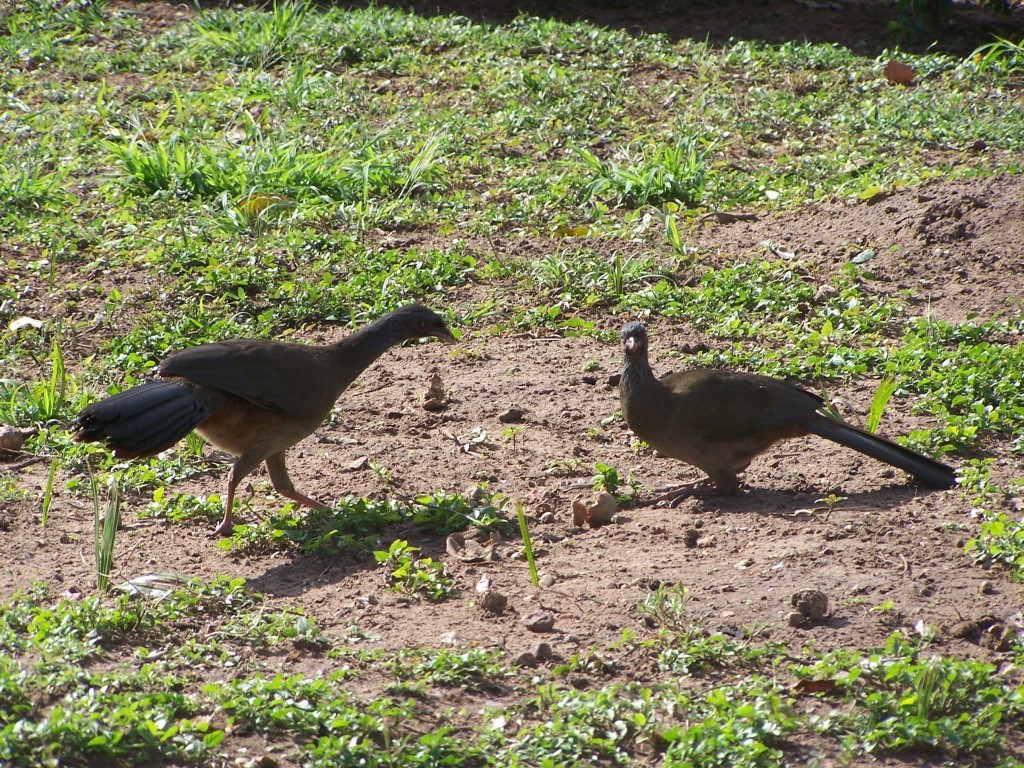
Then we passed the small airstrip and there were 2 mango trees just full of parrots-BF Amazons, Nandays and Maximillian Pionus!
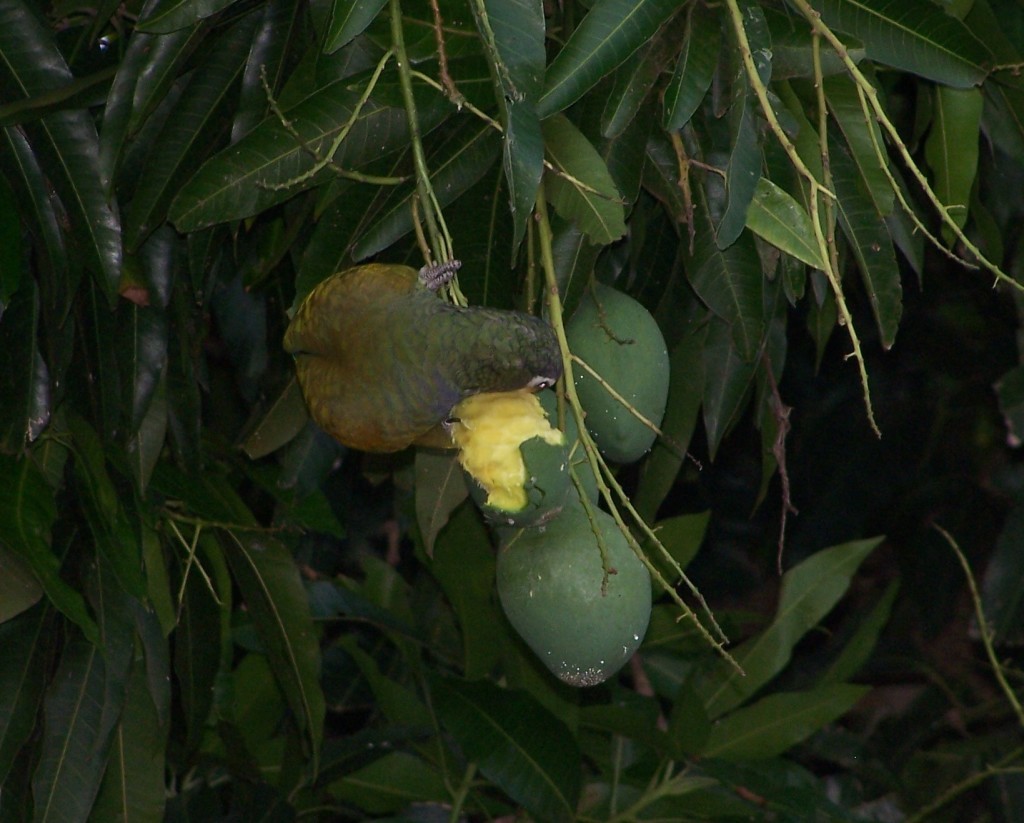
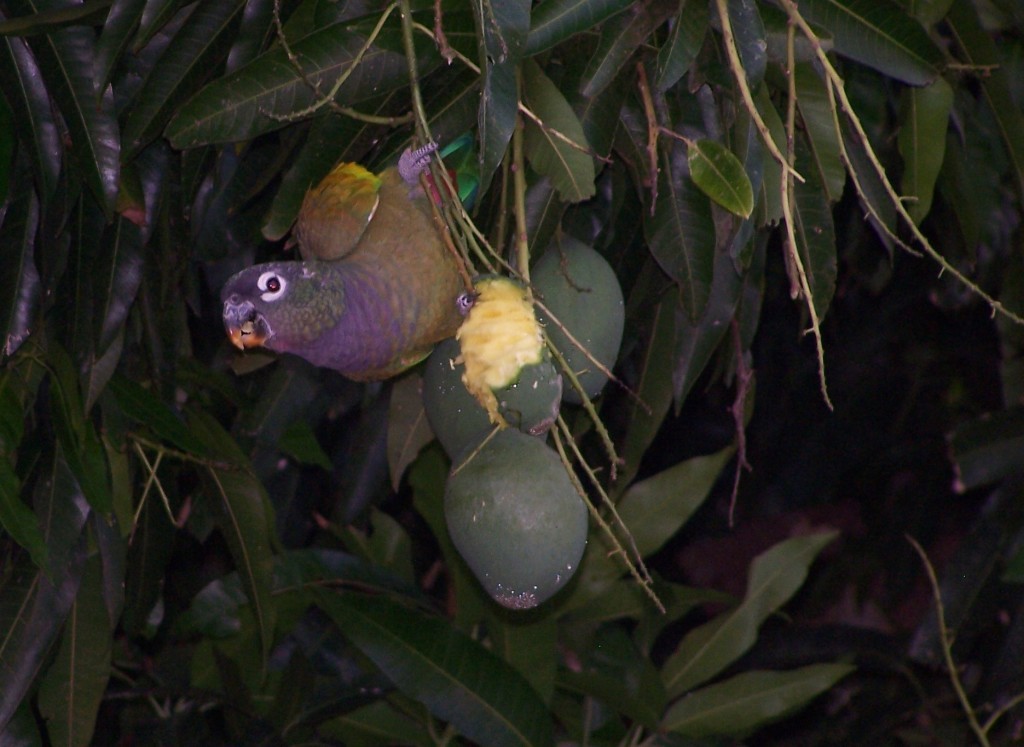


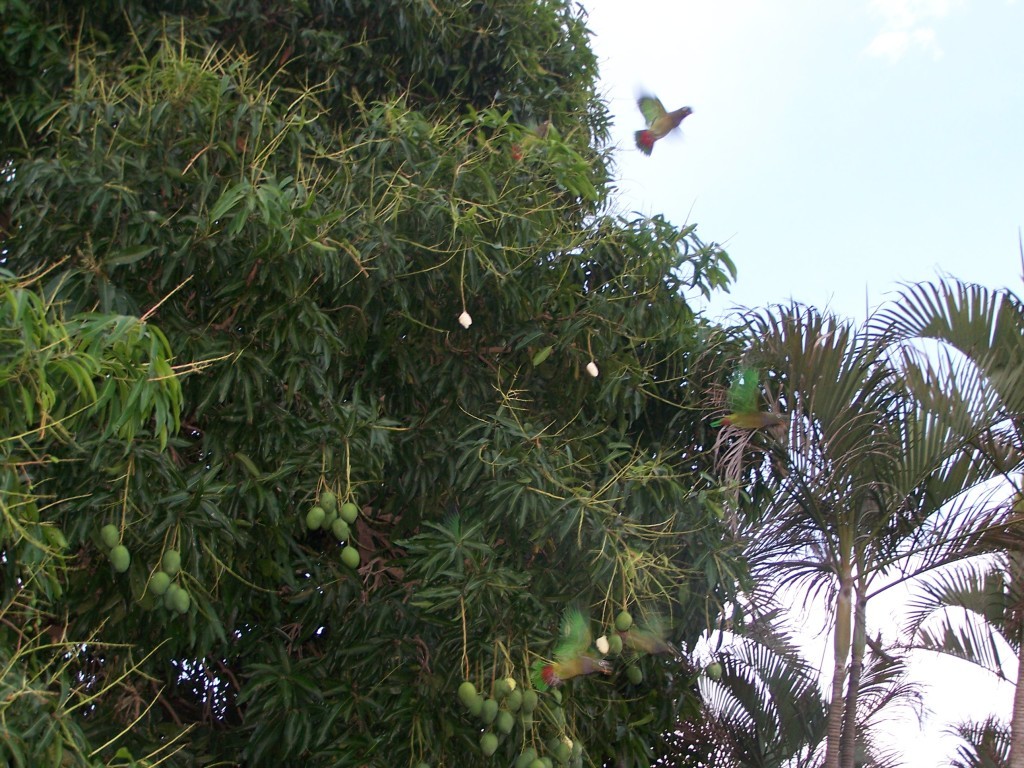
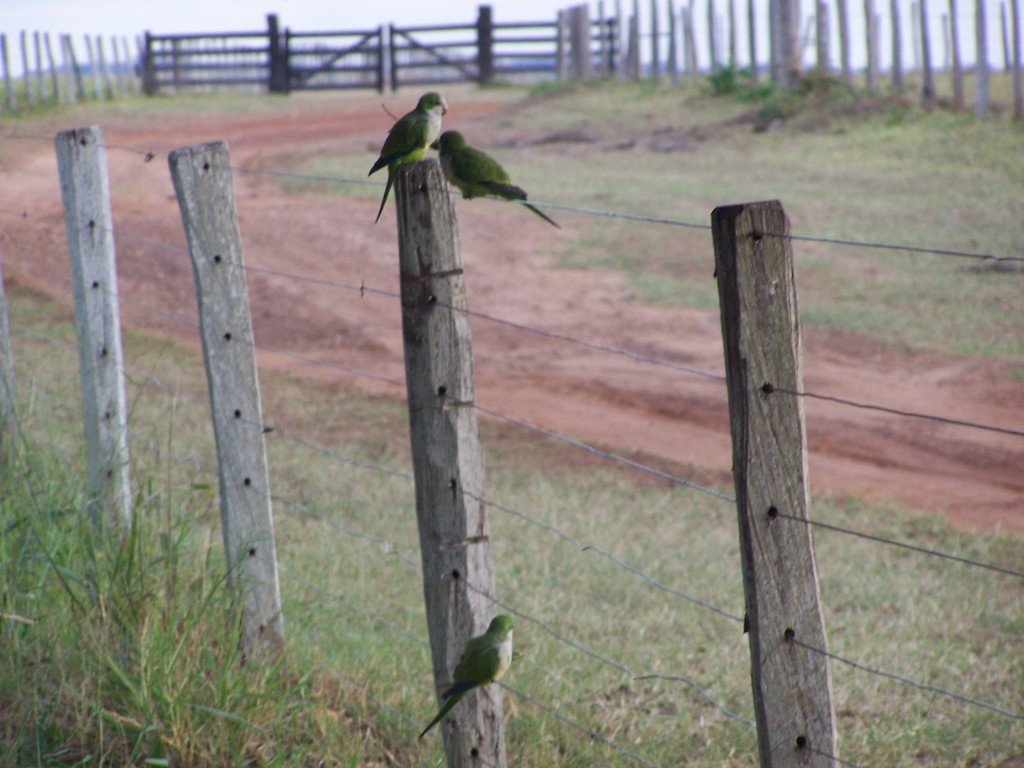
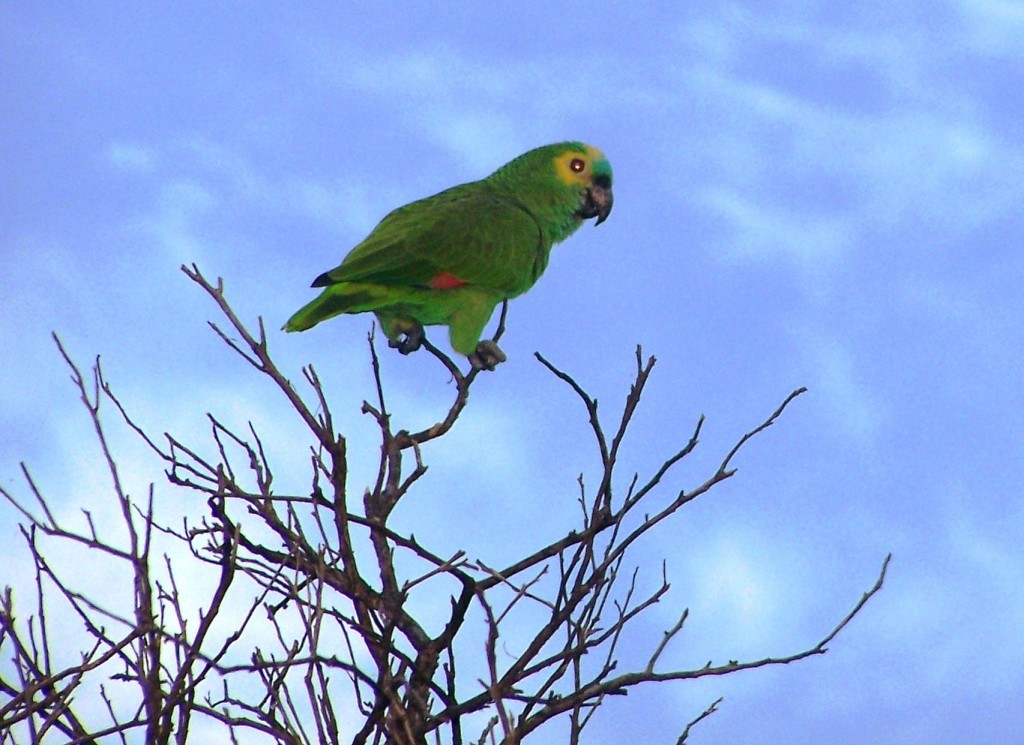
I flat out refused to leave the area, lucky there were no other tourists in the group! Ina and one of the guides biked on ahead but later on, he said he didn’t see anything else. The other guide finally managed to drag me away from the parrot trees kicking and screaming!
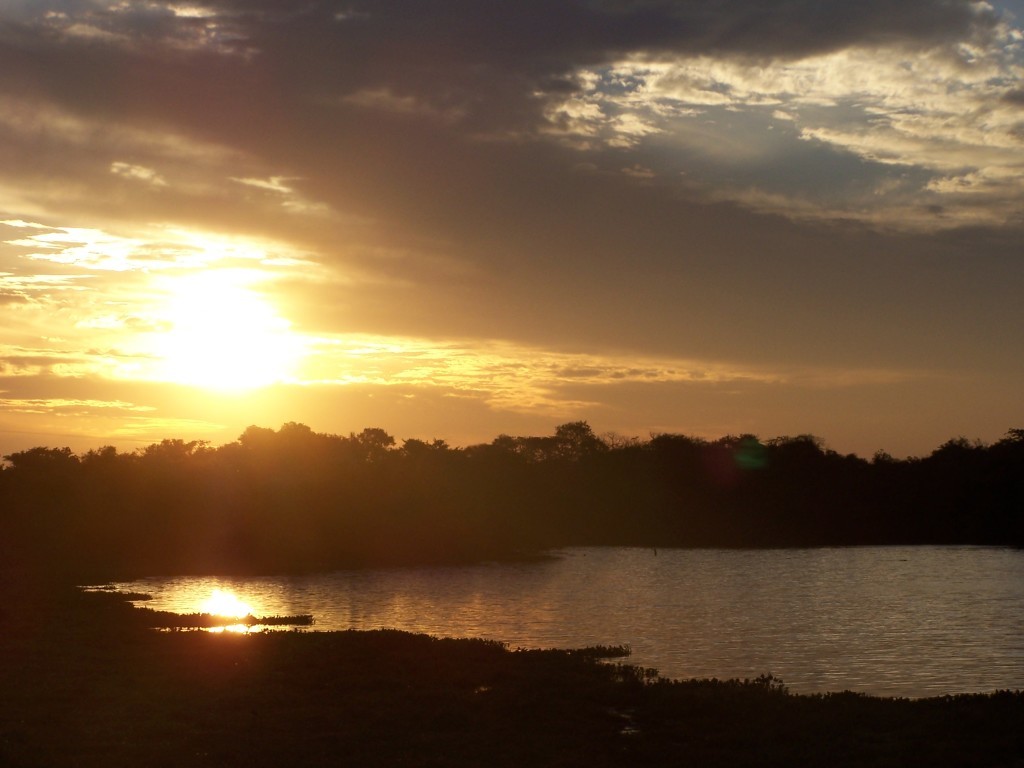
We reconfirmed with the people from Projecto Arara Azul for tomorrow. Cezar and one of the volunteers who spoke English-Julianne would be taking us with them on their normal daily routine. Neiva Guedes, the manager was out of the area so I didn’t get to meet her. Cezar runs the show in the field now with help of 3 volunteers.
Dinner was at 7:30, a nice buffet. Some of the other yellow group tourists had started to arrive, quite a mix-Americans, French, Belgians and Dutch. We jad a short night safari to see nocturnal animals which were VERY hard to spot and it was freezing cold! Then we made an early night so we could get up early for tomorrow.
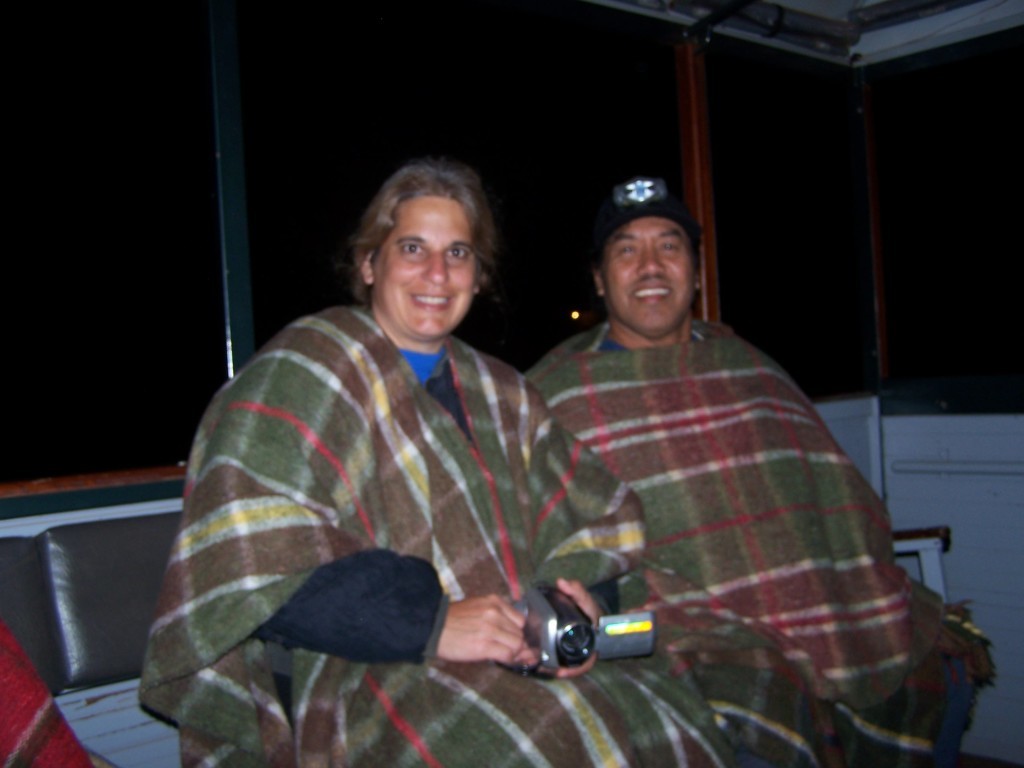
To be Continued…………………………..
A few days ago, I told you about a targeted discounted offer on flights between the USA and Sydney. I predicted that this deal would soon be open to everyone based on the language of the email I got stating it was a “presale”.
Good news! Now anyone can get this deal and with the Aussie dollar so low, its the perfect time for Americans to come Down Under!
For a limited time, enjoy a 20 – 25 percent discount on roundtrip MileagePlus® Saver Awards in United Economy® when you travel from the U.S. or Canada to Sydney, Australia. Book by January 28, 2016, and travel between February 2, 2016, and June 22, 2016, to take advantage of the discounted rates.
Discount Days of travel Regular price Reduced price* 25% off Sun, Mon, Tue, Wed, Thu 80,000 miles60,000 miles 20% off Fri, Sat 80,000 miles64,000 miles *Some exclusions apply. See terms and conditions for details.
Note: This table shows mileage rates for roundtrip flights. For one-way itineraries, the regular price still applies.
Book: January 7 – January 28, 2016
Travel: February 2, 2016 – June 22, 2016
Birders – check out my posts on birding in Western Australia, Tasmania & South-east Queensland.
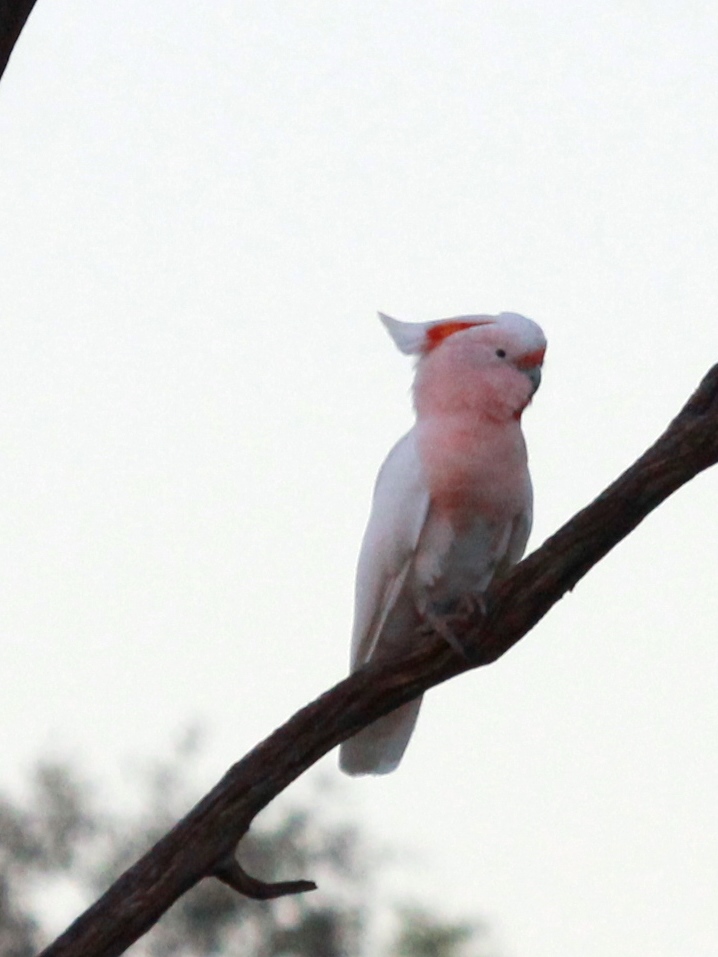
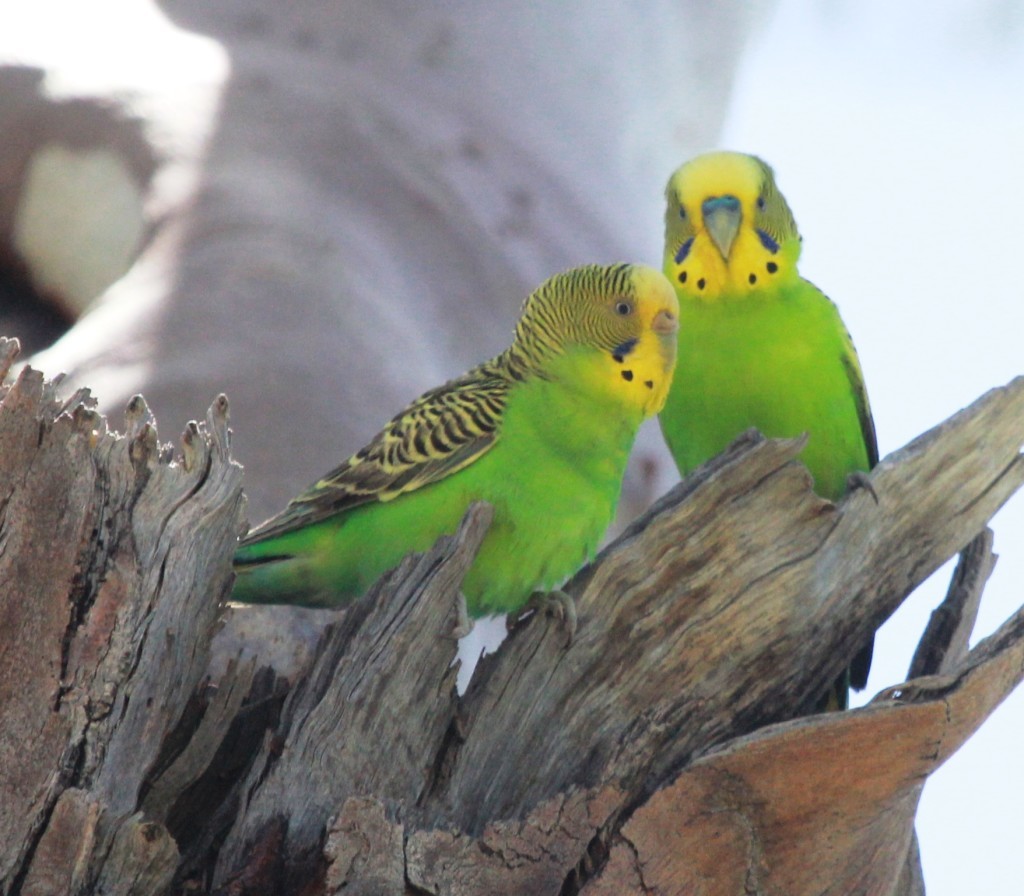
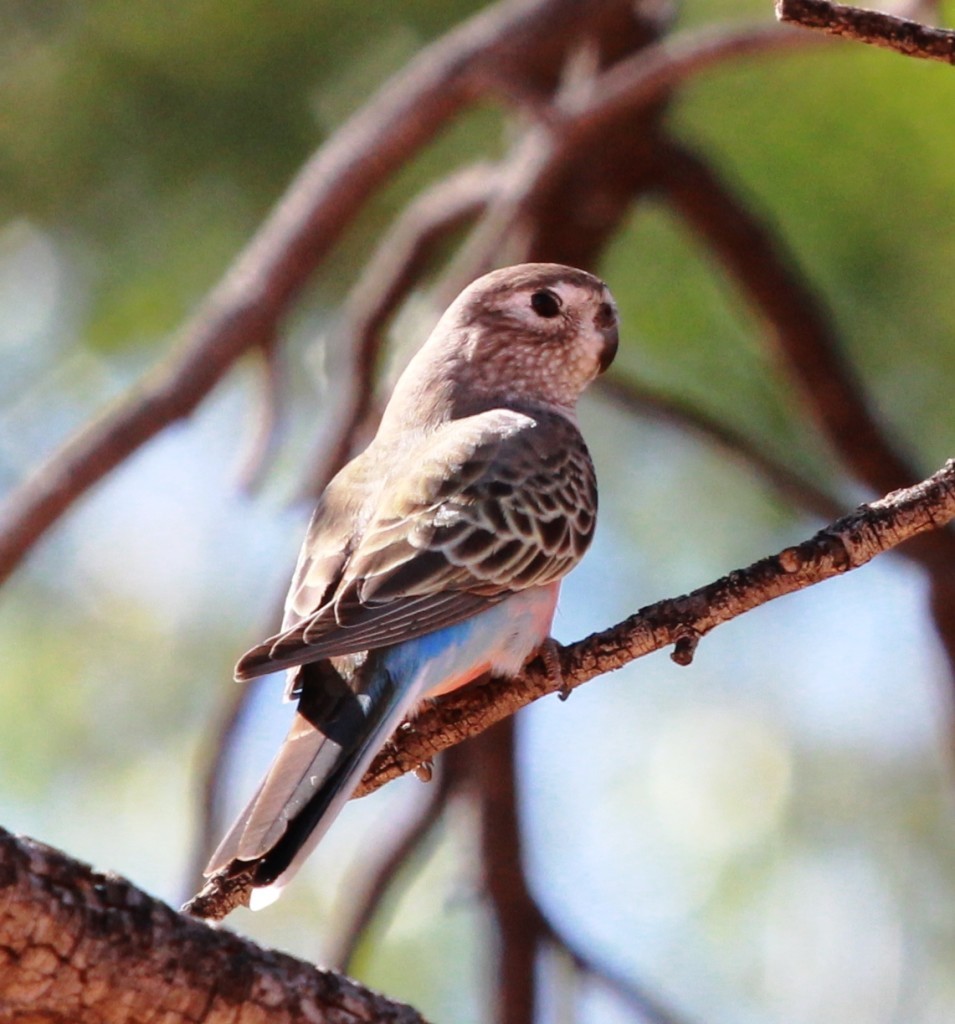
The Rheas are large ratites (flightless birds without a keel on their sternum bone) in the order Rheiformes, native to South America, related to the ostrich and emu. There are two extant species: the greater or American rhea (Rhea americana) and the lesser or Darwin’s rhea (Rhea pennata).

They have a large range over half of South America but most people will see them most easily in the Pantanal.
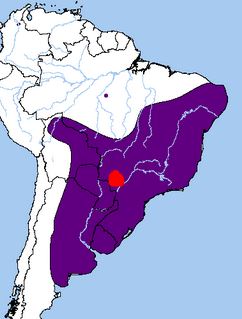
I struggled to find anything filmed in the wild but this one in a safari park is pretty good.
The undisputed showstopper of the Pantanal is the magnificent Hyacinth Macaw; native to central and eastern South America. With a length (from the top of its head to the tip of its long pointed tail) of about 100 cm (3.3 ft) it is longer than any other species of parrot. It is the largest macaw and the largest flying parrot species.




Most people come to the Pantanal in Brazil to see them as they are very easily found. You could also see them in far eastern Bolivia and slightly into northern Paraguay.
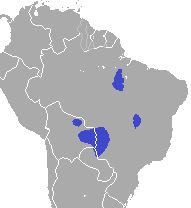
Notice how the videographer approaches cautiously behind a tree? This is how you get closer to wild birds! The loud calls are unmistakeable.
Two gorgeous youngsters working up their courage to leave the nest!